st.ed’s
ST. EDWARD’S UNIVERSITY MAGAZINE

Lighting the Path
How our students and alumni are building a brighter world


How our students and alumni are building a brighter world

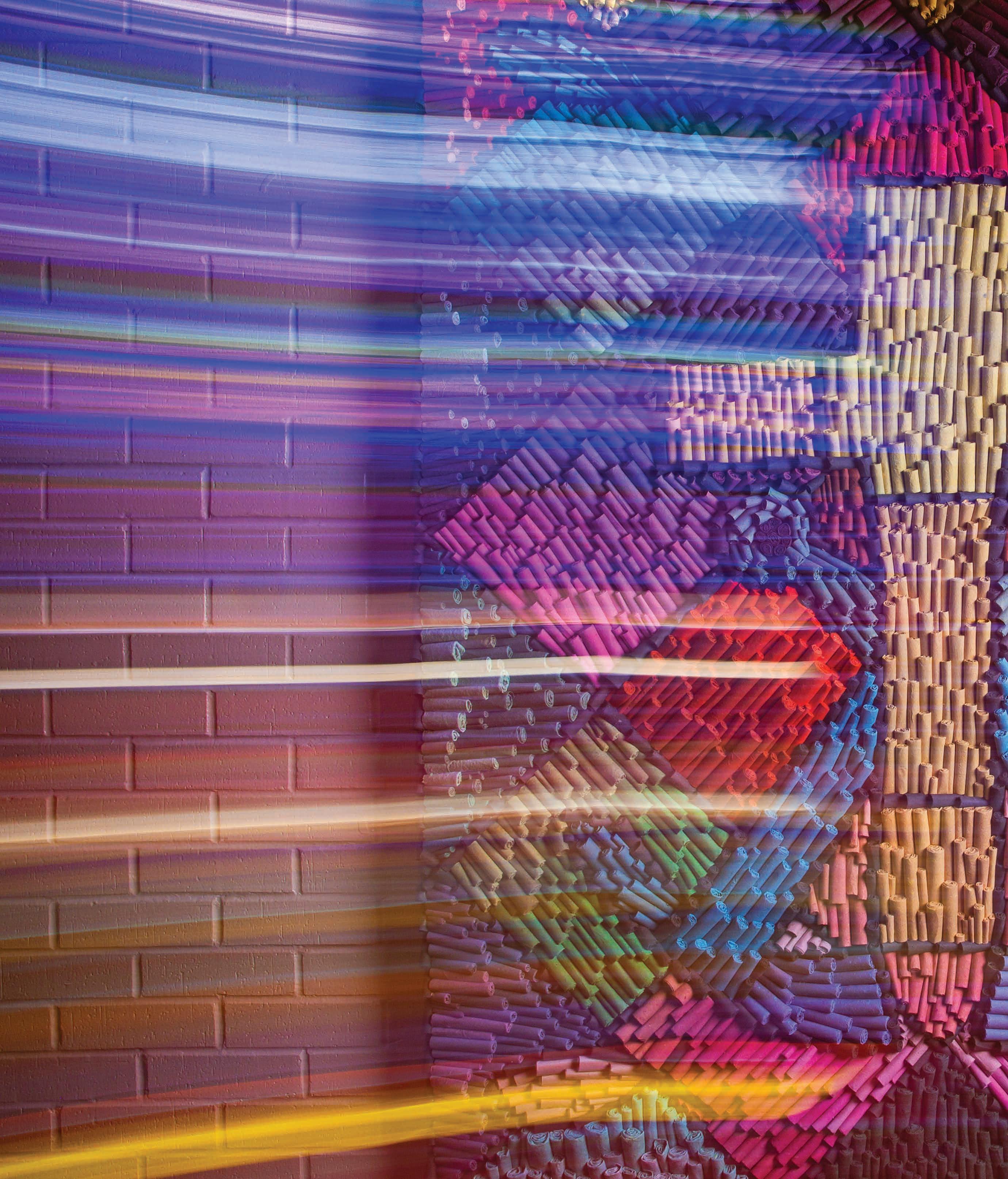


Artwork in the Holy Cross Institute’s new space honors the brothers’ spirit and legacy.BY ROBYN ROSS
LAST YEAR, the Holy Cross Institute moved into a new space on the ground floor of Premont Hall. In a room that once served as a chapel and now provides a place for gatherings, a large, colorful artwork by Jenn Hassin ’12 adorns the far wall.
Hassin, whose primary medium is rolled paper, invited retired Holy Cross Brothers to contribute a piece of clothing they had worn during their ministry. She turned strips of the material into a pulp she then transformed into paper. Brothers, students, faculty and staff wrote messages of hope on the strips before Hassin rolled them and placed them into the artwork, called Embodied, Cross and Anchors. The piece is a brilliantly colored symbol of the Congregation of Holy Cross that literally contains the hopes of the St. Edward’s community.
“I consider the making of my work to be the art, and the finished pieces are just remnants of that experience,” Hassin says. “The art really is the coming together as a community.”
Its color scheme is inspired by stained-glass windows that were donated by the family of the late Leonard Dornak ’66, who served in the Marine Corps — a connection that was meaningful to Hassin, an Air Force veteran. During her first visit to the space, the morning sun streaming through the windows cast brilliant colors on the walls, an effect she decided to replicate in Embodied Embodied will continue to inspire visitors to the Holy Cross Institute long after the brothers who contributed its materials are gone. Director Richard Bautch says this makes the artwork a perfect fit for the institute, whose aim is to sustain the Holy Cross mission among laypeople at the congregation’s schools and colleges.
“For generations, it was the brothers who brought life to St. Edward’s,” Bautch says. “The role of the institute has been to make the spirit and legacy of the brothers available to everyone so we can faithfully continue what they started.”

Presidential Award recipient Evan Mao ’23 champions a philosophy of justice, service and transformation.
BY STACIA MILLER MLA ’05HURRICANE MARIA BARRELED against the eastern edge of Puerto Rico at dawn on September 20, 2017, bringing extreme rainfall and wind gusts that topped 155 mph. After plowing across the island, the deadly storm left Puerto Ricans to face months — in some regions, nearly a year — without electricity and without the resources to repair roughly $100 billion in damaged infrastructure.
Four years later, when Evan Mao ’23 arrived on the island for a weeklong Campus Ministry Service Break Experience (SBE), not much had changed for Puerto Ricans. In fact, Mao and his fellow Hilltopper volunteers had come to help rebuild homes that were still in shambles.
“When we talked to some of the people we were there to help, you could see just how raw and deep the emotions still were,” he says. “One gentleman who was staying with family members because his house had been uninhabitable since Maria came by every day to talk with us. He was so thankful.” Though Mao was in Puerto Rico for just a week, the experience made him eager to join another SBE. “The amount of work we were able to do in a week was eye-opening,” he says. “It made me aware of all that we have — and how much we have the power to provide when we come together.”
The following year, he served as an SBE team leader for a trip to André House, which provides meals, showers, a clothing closet and other necessities primarily to people without housing in Phoenix, Ariz. He led his group in daily reflections focused on SBE’s core tenets: building community, doing justice, living simply and engaging spiritually. “We came together each evening to talk about the people we had met and served,” he says. “To really understand the transformation happening in all of us, it was important to sit together and talk about those shared experiences and emotions — from sadness and helplessness to gratitude and hope.”
Mao’s connection to the Holy Cross philosophy of justice, service and transformation preceded his arrival on the hilltop. He attended Moreau Catholic High School in Hayward, Calif., and came to St. Edward’s on a four-year, full-tuition Moreau Scholarship, awarded to one graduate from each Holy Cross high school.
“High school was my first introduction to the Holy Cross core value of educating hearts and minds. Across all my experiences with Holy Cross, that’s been the bottom line — it’s always present and consciously lived,” Mao says. “I’ve had so many opportunities because of Holy Cross and have learned a lot about myself and the kind of person I want to be.”
Mao took advantage of more opportunities during his time at St. Edward’s. The Communication major and Digital Media Management minor participated in the Honors Program and completed a thesis on deepfakes: deceptive, realistic images and videos produced with artificial intelligence. He played and coached men’s club volleyball and basketball, and he was team manager and assistant coach for the Hilltopper volleyball team. He served as communications director for the Student Government Association and led the Hilltop Hospitality tour guide program.
As president of Hilltop Hospitality, Mao wanted to make sure prospective students felt the same sense of belonging that had made his college decision easy. “It’s cliché, but when you know, you know,” he says. “When I toured St. Edward’s, I just knew it was the place for me. The campus is beautiful, the town is great, and the aura on campus is inspiring. I felt like the Admission Office wanted me here. Coming full circle and being a tour guide myself was the perfect way to show off my school and talk about how much it had influenced me.”
Mao’s academic accomplishments and campus involvement earned him the prestigious Presidential Award, given annually to seniors who embody the university’s Holy Cross tradition and mission. By the time he graduated in spring 2023, he had turned a longtime internship with cloud-based data management company Snowflake into a full-time job as a creative services specialist. He still coaches the St. Edward’s men’s club volleyball team, works with the Hilltopper volleyball team and mentors the Austin Junior Volleyball youth teams.
Mao says he’s received far more than he’s given. “The spiritual and emotional connections I gained at St. Edward’s continue to nourish me as a human and a young adult,” he says. “Those values have become a way of life.”
Editor
Kat Braz
Creative Director
Helen Elliott
Art Director
Kathia Ramirez
Photographer
Chelsea Purgahn
Designer
Larae Hurley
Vice President for Marketing and Communications
Christie Campbell
President
Montserrat Fuentes, PhD
On the Cover
A $5 million NextGen grant from the U.S. Department of Agriculture to support the School of Natural Sciences, coupled with the university’s strategic initiative to launch a school of health sciences, will establish St. Edward’s as a leader in agricultural sustainability and health equity for the betterment of humankind.
Illustration by Matt Chinworth
St.
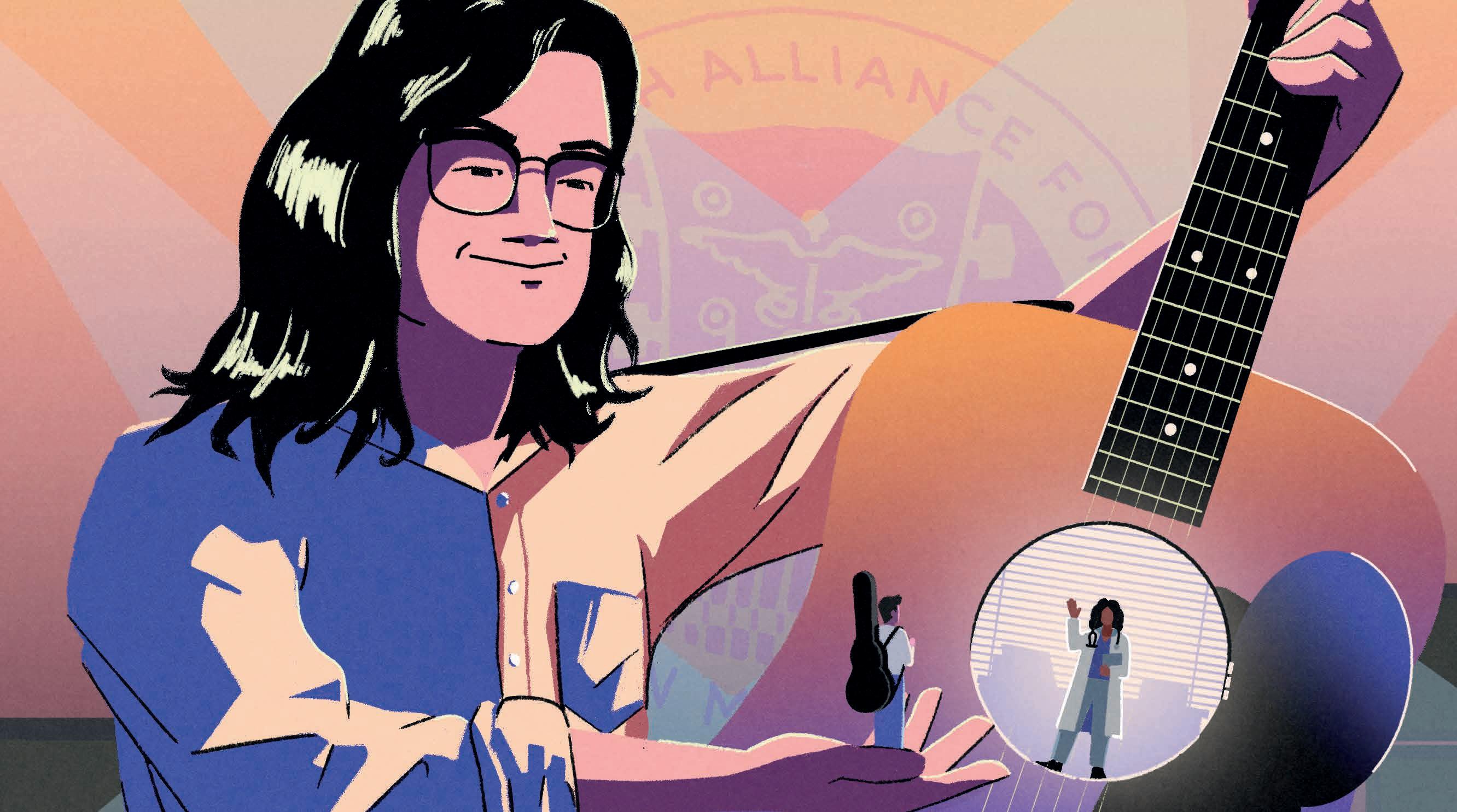
A Social Work major combines his love of music with dedication to social change in a Health Alliance for Austin Musicians internship.
BY ROBYN ROSS ILLUSTRATION BY DANIEL CRESPOON A THURSDAY night in September, Jude Hill ’24 looked out from the stage at Hotel Vegas, an intimate venue on Austin’s east side. Forty upturned faces gazed back as he turned on his guitar pedals and let noise and feedback build. His adrenaline surged as the sound reached a crescendo and the drummer and bassist in his grungerock band, Farmer’s Wife, began to play. Hill and his three bandmates performed regularly at Hotel Vegas, but the show that night was different: It was a benefit for the Health Alliance for Austin Musicians, or HAAM, where Social Work major Hill was an intern.
It felt good to use his musical talents to support the group’s mission, Hill says, because “not a lot of social work organizations rely on creativity in that way.”
Farmer’s Wife had booked the show before Hill started his internship, but the benefit was a serendipitous alignment between his musical life and his major. All Social Work majors at St. Edward’s complete a 400-hour internship with a community agency during their senior year, applying their classroom education in professional practice. For Hill, who started playing guitar seven years ago, HAAM was a natural fit.
Austin’s world-famous music scene is an important contributor to the local
economy, but musicians themselves often lead financially precarious lives, working part-time service-industry jobs that don’t include health benefits. HAAM helps fill the gap, providing musicians, music teachers and DJs with dental, vision and hearing care as well as assistance choosing an insurance plan on the Department of Health and Human Services’ Health Insurance Marketplace.
At HAAM, Hill got experience with “macro-level” social work, which includes outreach, community organizing and advocacy. He helped with preparations for HAAM Day, the nonprofit’s largest fundraiser, a 6 a.m.-til-midnight extravaganza encompassing more than 200 musical performances — including the show at Hotel Vegas. He also sharpened his skills in “micro-level,” or individual, social work by training to become a healthcare navigator and helping musicians choose insurance plans that fit their needs.
Hill says the internship taught him the importance of healthcare literacy, which is not always equitably distributed in society.
“The American healthcare system is very complex to navigate,” he says. “You must have someone explain it to you, or you guess your way through it. I’m really glad HAAM exists to promote people being informed.”
These Hilltoppers bring fresh perspectives to teamwork.
BY ROBYN ROSS PURSUITS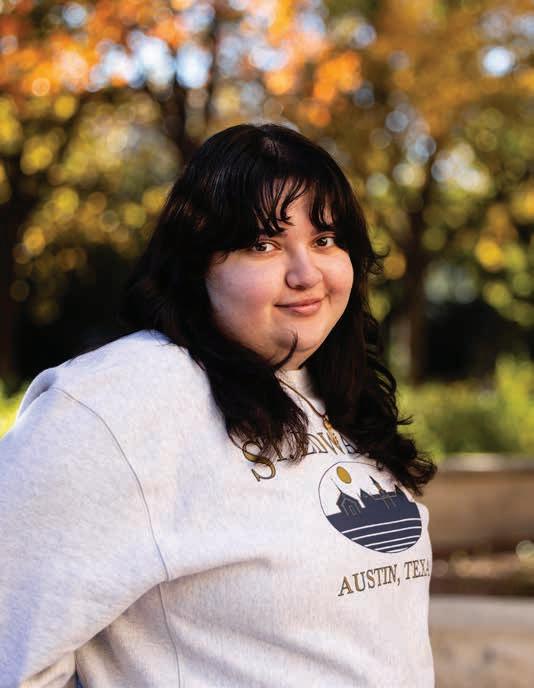
Optimizing: The summer after her freshman year, Oseguera worked for the city of Mission, Texas, near her hometown of McAllen. One day, as she watched her supervisor struggle
to complete a tedious task, she envisioned — and implemented — an easier, faster way to get the job done. Now Oseguera specializes in internal process improvement at her student job in the university’s Office of Information Technology, where she has streamlined the hiring process.
Making someone’s day: Oseguera interned in the district office of U.S. Rep. Greg Casar, who was elected to Congress in 2022. One of her duties was helping constituents renew their passports. Although the work doesn’t make headlines, it makes a difference for people who can finally travel abroad to visit relatives. “One of my favorite parts of the internship was working with the constituents and hearing the happiness and gratitude in their voices,” she says.

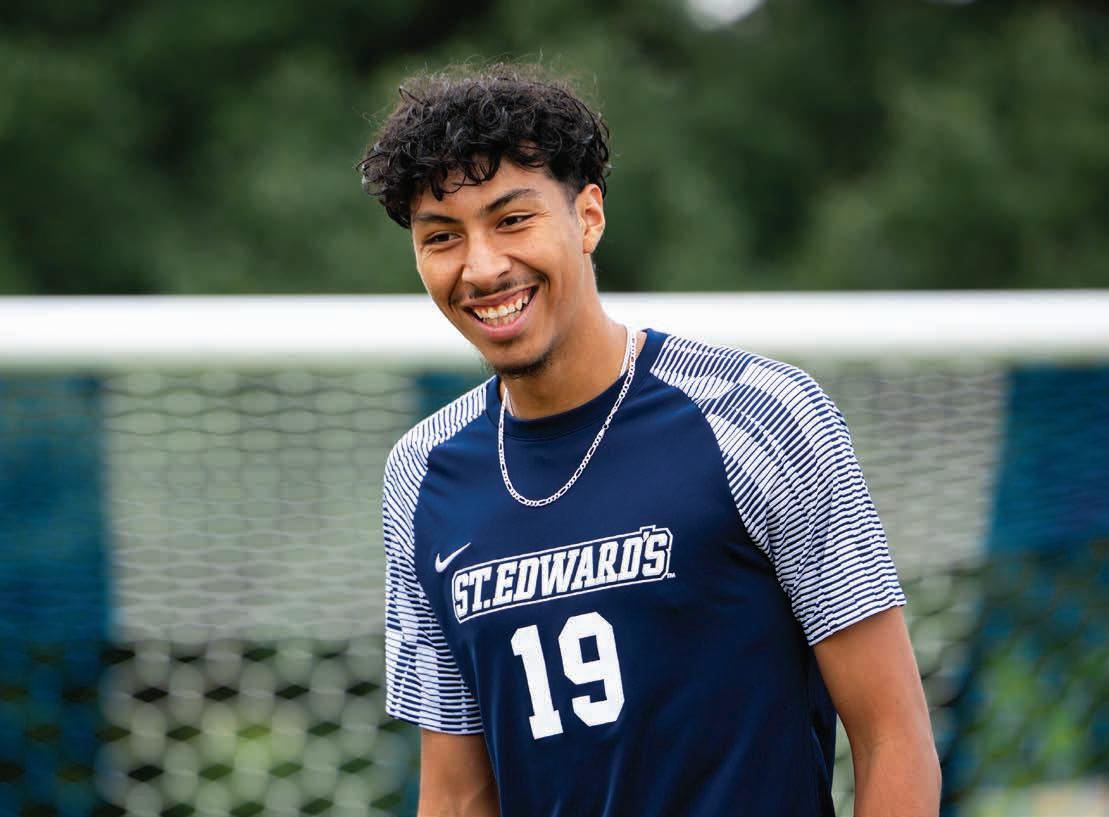
Building a team dynamic: Abarca is a center back on the varsity men’s soccer team in its inaugural season back on the hilltop. The position requires him to use his vantage point, where he can see most of the field, to instruct other players where to move. “Sometimes they’re not looking at you, so they have to trust you,” he says.
A singular opportunity: As a López Scholar, Abarca is part of a
select group of Latino firstgeneration college students whose tuition, fees and housing are paid for by the Hector and Gloria López Foundation. The scholarship meant he wouldn’t need to work while attending St. Edward’s and could focus on school and playing soccer. “When I got the call that I was chosen, I was in shock at first,” he says. “When they explained it, I was so relieved and excited.”
“One of my favorite parts of the internship was working with the constituents and hearing the happiness and gratitude in their voices.”
VICTORIA OSEGUERA ’24
Claire Lawrence ’24, Communication
Finding joy in editing: Lawrence always knew she wanted to write. But her experience as editor-in-chief of Hilltop Views revealed that she also enjoys leading a newsroom and mentoring younger reporters. “The newspaper is here to give to our community through our reporting, but we’re also here to help students grow into the best journalists they can be,” she says. What her internship taught her: In fall 2022, Lawrence reported
breaking news at the Austin American-Statesman newspaper. Although she learned skills she was excited to pass along to her staff at Hilltop Views, she realized the fast pace of daily journalism didn’t suit her. “I wanted to spend more time with my sources and dig deeper into a topic.”
Letting off steam: Lawrence plays bass in a rock band. After stressful days at school and the newspaper office, she recharges through jam sessions with her friends. “Music always makes things better for me,” she says.
Innovator and entrepreneur Shakiib Wauyo ’25 hopes to improve the livelihood of African farmers with support from the Munday School of Business.
BY STACIA MILLER MLA ’05THE WORDS SPOKEN by his elementary school principal still resonate with Shakiib Wauyo ’25 — “Don’t be surprised if one day Shakiib is president of Uganda.” As the eldest child of a family from a subsistence farming community in eastern Uganda, the junior Finance major learned early on that education would be his best chance to escape generational poverty and illiteracy. “I was terrible at football and basketball, but I loved intellectual sports,” he says. “Anything that involved analyzing policies and battling with ideas appealed to me.”
His academic prowess earned him a full scholarship to Holy Cross Lake View Secondary School in Jinja, Uganda, where he excelled at debate and business. He and longtime friend Emmanuel Epau ’24 even founded several companies that make liquid soap and food spices for local businesses and worked with another company that helped secure smartphones for rural Ugandans.
Wauyo is now a Hilltopper, having won a Moreau Scholarship awarded by St. Edward’s University to one student from each Holy Cross high school around the world. Wauyo, Epau and fellow Holy Cross Lake View graduates Agatha Ais ’27, Samuel Muwanika ’27 and Mark Olwa ’27 also receive support from a grant from the Tejemos Foundation of San Antonio. And even though the hilltop is 8,500 geographical miles and countless cultural steps from the lush hills of Jinja, the Holy Cross schools’ shared values make the two seem closer.
“Hope, honesty and integrity are pillars of a Holy Cross education,” Wauyo says. “We are all united by these values — at the end of the day it’s not about how different we are, but how similar.”
Leaning on those familiar values, Wauyo jumped right into campus life. He is a student assistant in the Office of the President, internal affairs director in the Student Government Association and staff development coordinator for Recreation and Wellness.
Last spring, he and Epau won the Bill Munday School of Business’ iChallenge Business Plan Competition for Bafrika Trade, an app that will help digitalize the East African agricultural sector and ensure that farmers can sell their products for a fair price.
“I’m from a family of farmers — I know how hard it is to put food on the table. If there is anything left over, farmers struggle to find a market for their products. If they do, they often get cheated,” Wauyo says.
With prize money from the iChallenge competition, Wauyo and Epau returned to
Bafrika Trade is our solution to that problem. Every place in the world is going digital, so why not Africa?”
Uganda over the summer to conduct focus groups with farmers and hone the Bafrika Trade business plan. “It’s one thing for us to want to provide this for them, but we want them to use it and benefit from it,” Wauyo says. The duo also shot footage for a documentary about farming in rural Africa, which they hope to use as they launch their marketing campaign.
“I’m very passionate about Africa and finding solutions for the African continent — that’s the place I call home,” Wauyo says. “It’s our responsibility as young entrepreneurs to shape the future of our continent and continue making Africa a better place.”
When he completes his studies and eventually returns to Uganda, he’s considering getting into politics (and perhaps one day fulfilling his old principal’s prediction). Whatever the future holds for this young entrepreneur and visionary, Wauyo is clear about what continues to propel him forward: “There’s something different about Holy Cross. You won’t only find educators; you’ll find best friends, people who really want to get the best out of you. I think that’s what education should be.”





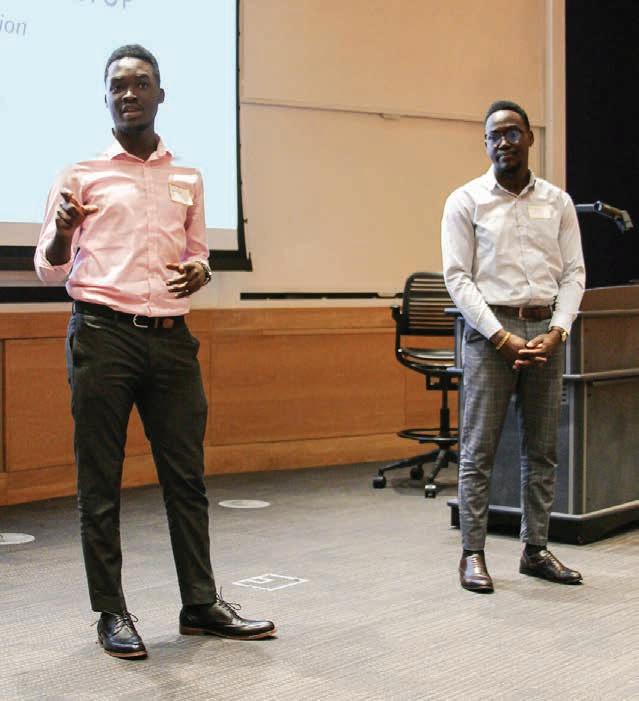
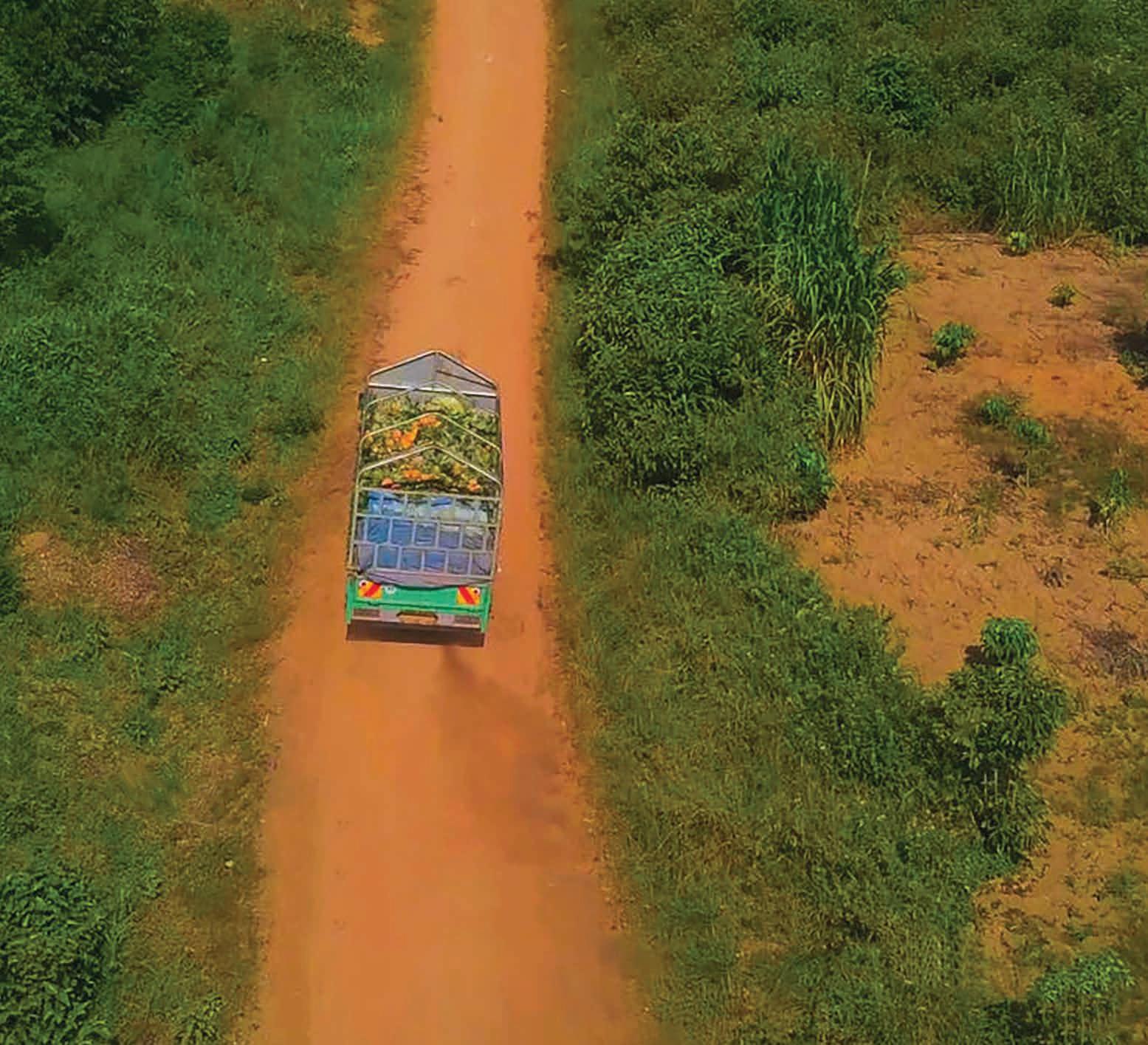
1. Visionary Leadership
Wauyo attended the Holy Cross Mission Center Centennial Celebration at the University of Notre Dame in October.
2. Fruits of Labor
A Ugandan farmer harvested pineapples during the market survey project for Bafrika Trade.
3. Launching an Idea
Wauyo participated in 3 Day Startup, a weekendlong event where students build a startup from scratch.
4. iChallenge Champions
Wauyo and Epau won the 2023 Munday School of Business’ iChallenge Business Plan Competition for Bafrika Trade
5. On the Road
An aerial shot of agricultural produce in transit that appears in the Bafrika Trade documentary.
6. A Celebration of Culture
Wauyo and Epau marched with fellow international students during the Homecoming parade.
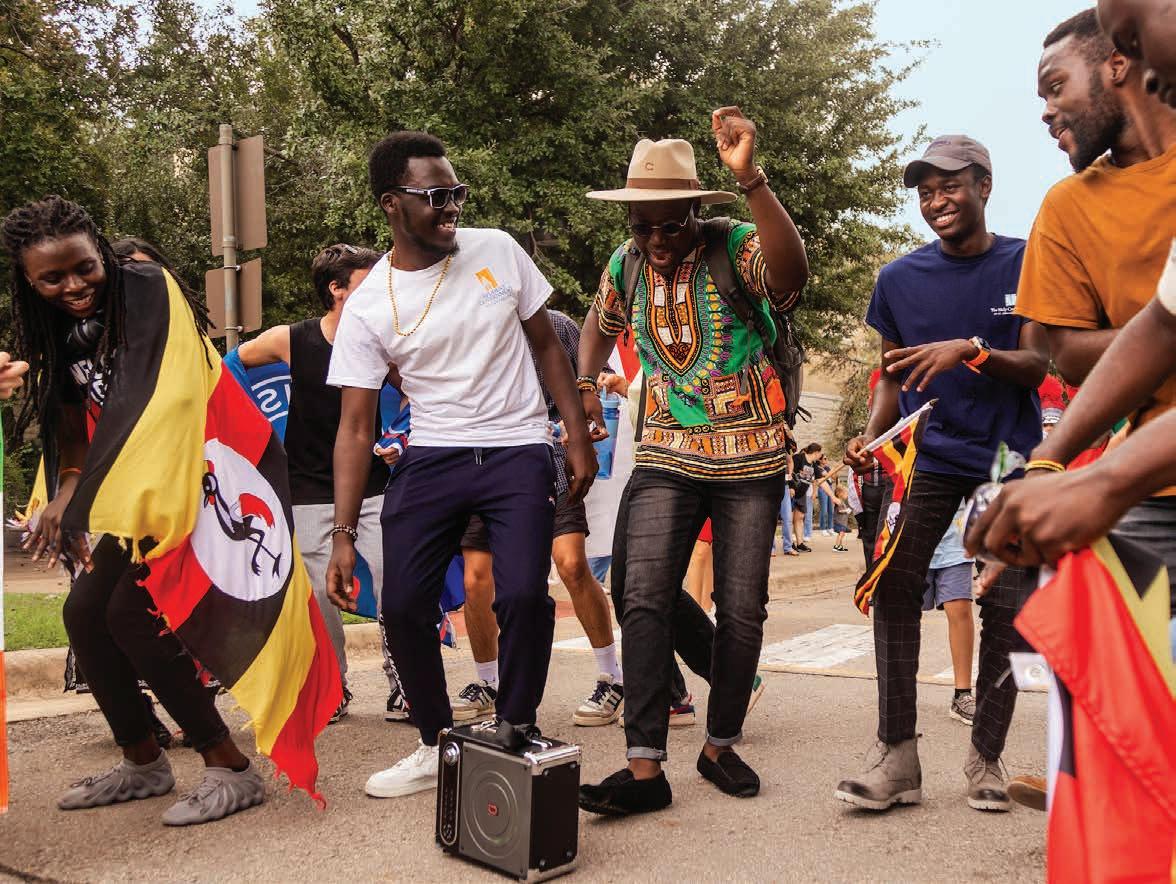


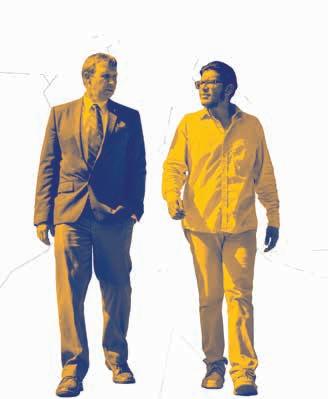
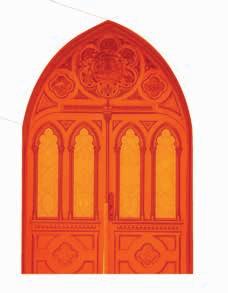


The Kozmetsky Center of Excellence transforms into a hub for civic engagement.
BY MATT DEWALD ILLUSTRATION BY KATHIA RAMIREZIF DEMOCRACY IS messy, as the cliché goes, David Thomason is just fine with that. What he doesn’t want is for it to be nasty — or worse, broken. In Thomason’s experience, messiness and even mistakes are signs of progress in the context of democratic civic life. Now he’s helming a new initiative to make St. Edward’s a vanguard of that progress in Central Texas.
Last summer, Thomason, an associate professor of Political Science, became director of the Kozmetsky Center of Excellence as it pivoted to focus on civic engagement. The center helps students become fully participating, active democratic citizens through its popular Civics Lab course and guest speakers, including current and former elected officials. It also plays a vital role in the Austin community by convening conversations in partnership with a broad array of stakeholders.
Experiential learning is its main tool. Students can get involved with the center by taking courses that send them into the community; by interviewing area leaders for a podcast; and through internships. Last fall, the center’s packed schedule included an event focused on the November bond and constitutional amendment elections and “Envisioning Austin’s Future,” a discussion with panelists including former Austin mayor Steve Adler and Civics Lab alumna Desi Tsacalis ’24.
“I look at experiential learning like an experiment,” Thomason says. “You take what you are doing in a classroom, and you put it out in the world and see how it works.” That’s also how he sees democracy. “You play with ideas and think about constructing a solution. If it doesn’t work one way, you reconstruct it and do it another way. It’s a series of iterations to solve problems.”
The Kozmetsky Center’s programs involve people and organizations with a variety of different — and sometimes opposing — perspectives. Its focus on solving shared problems diffuses the partisanship that can turn political conversations into angry debates.
“Our only agenda is to promote democracy,” Thomason says. “We’re just attempting to create places where people can solve problems. I’m a realist, but I’m also hopeful that when you’re actually in a room with somebody, it’s much harder to say things that villainize them.”
In Thomason’s view, the Kozmetsky Center does more than heal the divisive politics of the moment; it also sustains the Holy Cross mission. “I believe we’re educating students for now and eternity,” he says, paraphrasing Blessed Basil Moreau. “That’s the core of what we do: meet people where they are, serve the community and help promote a more just world. These are all essential to the work that we’re doing.”
A National Endowment for the Humanities grant will help Jimmy Luu build a more inclusive account of the field.BY MARLA HOLT
GRAPHIC DESIGNERS ARE visual communicators who manipulate text and images to convey a particular idea or message. Inevitably, their identities influence the work they create.
“At St. Edward’s, we acknowledge this human dimension and teach from the idea that lived experiences shape every designer’s approach to their work,” says Jimmy Luu, associate professor of Graphic Design.
But the discipline’s mainstream history doesn’t reflect the diversity of designers’ identities. Designers have come from all backgrounds, but not all had access to resources that could promote and preserve their work. Plus, the discipline is relatively young: In contrast to art and architecture, which have documented histories that date to antiquity, the term graphic design didn’t emerge until the early 20th century.
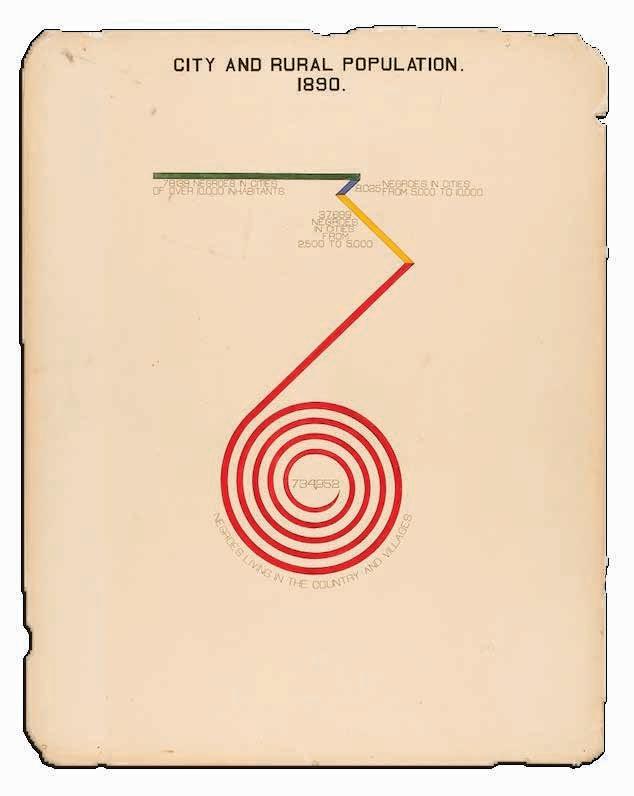
“We have limited resources from which to teach graphic design history, and those we do have lack representation of the contributions of marginalized practitioners, particularly women, people of color and the LGBTQ+ community,” says Luu, who teaches a course on the field’s history.
Only within the last decade have ideas and artifacts of these groups begun to be documented, as design historians have taken on the urgent task of diversifying the field’s archives. Luu cites the example of the Black intellectual W.E.B. Du Bois, whose charts and graphs visualizing Black America were exhibited at the 1900 Paris Exposition. The data visualizations not only laid bare the inequality of the Black experience in America; they also employed elements of modernism — minimalist typography, streamlined forms, bright colors — well before the era of those typically credited as founders of the movement.
“Du Bois’ designs are decidedly modernist and predated many of the European artists to whom we have attributed the rise of modernism in graphic design,” Luu says. “The inclusion of Du Bois’ work complicates an easy retelling of this history.”
With the help of a $60,000 grant from the National Endowment for the Humanities, Luu is developing a lecture series to teach inclusive graphic design history. “Now that we have this new body of artifacts to examine, how do we remake the stories we tell about our discipline’s evolution?” he asks.
Luu has invited four pairs of graphic design scholars and practitioners to document and contextualize the design contributions of underrepresented groups. Each pair will develop an academically rigorous course of study, considering how they might reframe a particular aspect of design history.
The teams will present their findings in Luu’s graphic design history course and then develop publishable materials — such as a book or podcast — that can be shared with other graphic design educators.
“It’s difficult for many young designers to imagine themselves in the discipline if they can’t see people who are like them being recognized as successful practitioners,” he says. “I’m hoping this project will help more students be empowered by designers in history who more closely resonate with who they are.”
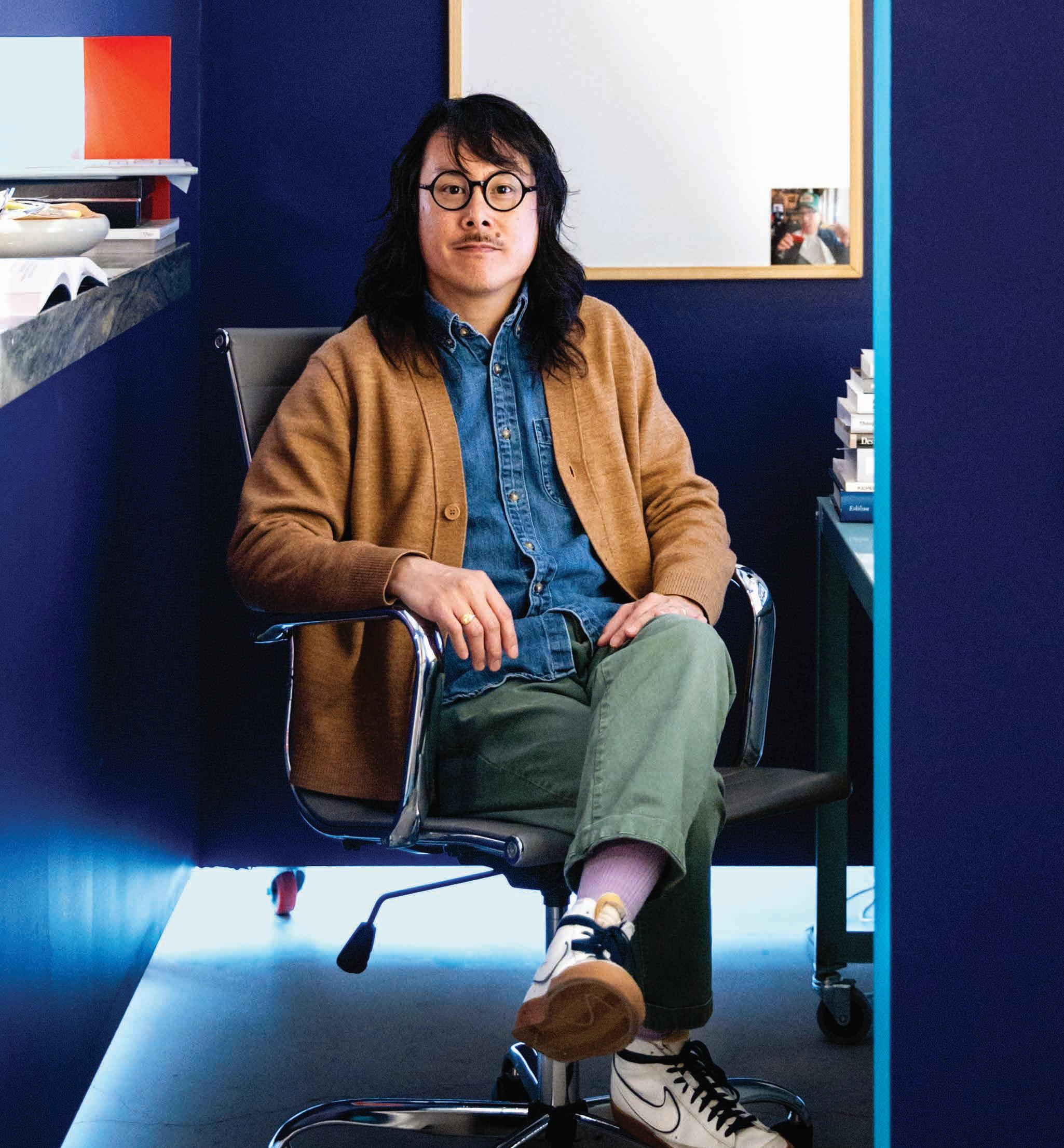

Moments of celebration, lifelong learning and community engagement forged indelible memories.
The St. Edward’s men’s basketball team made its Austin Moody Center debut in October during an exhibition game against the University of Texas. The Longhorns’ head coach, Rodney Terry ’90, was a three-year starting point guard for the Hilltoppers.



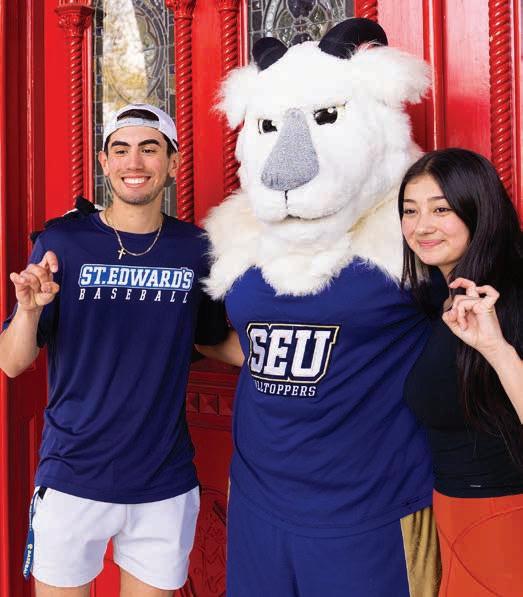
1. Hilltop Spirit Topper pride was in full force as students gathered for a back-toschool pep rally to recognize athletic achievement and celebrate the beginning of another prosperous year on the hilltop.
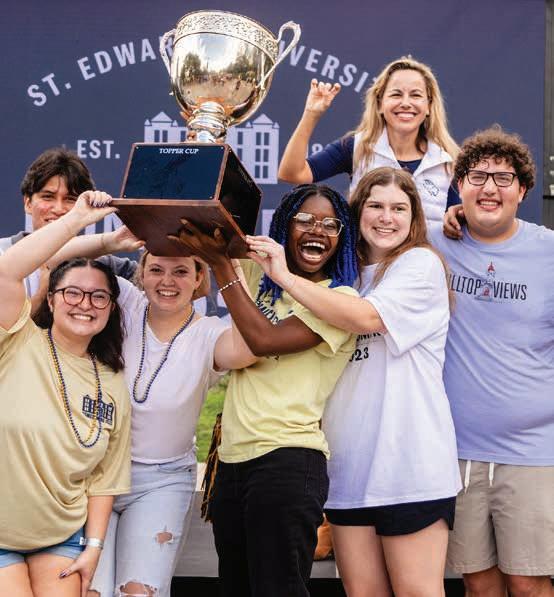
2. Silent Disco Students chose their own musical experience during the Welcome Days silent disco. Provided headphones allowed attendees to tune in to their preferred station and dance the night away to their favorite beats.

3. Choose SEU Topper greeted admitted first-year students and their families at the red doors during Choose SEU events held in the spring. The daylong events provide an immersive experience of campus life.
4. Topper Cup Champs
After a week full of activities to earn competition points for creativity and school spirit, among other things, the Holy Goats took first place in the Topper Cup challenge and celebrated with the coveted trophy.
5. Wetland Ecology Environmental Science and Policy students and faculty visited Rockport on the Gulf Coast to learn about cultivated oyster mariculture and participate in coastal conservation and wetland restoration activities.
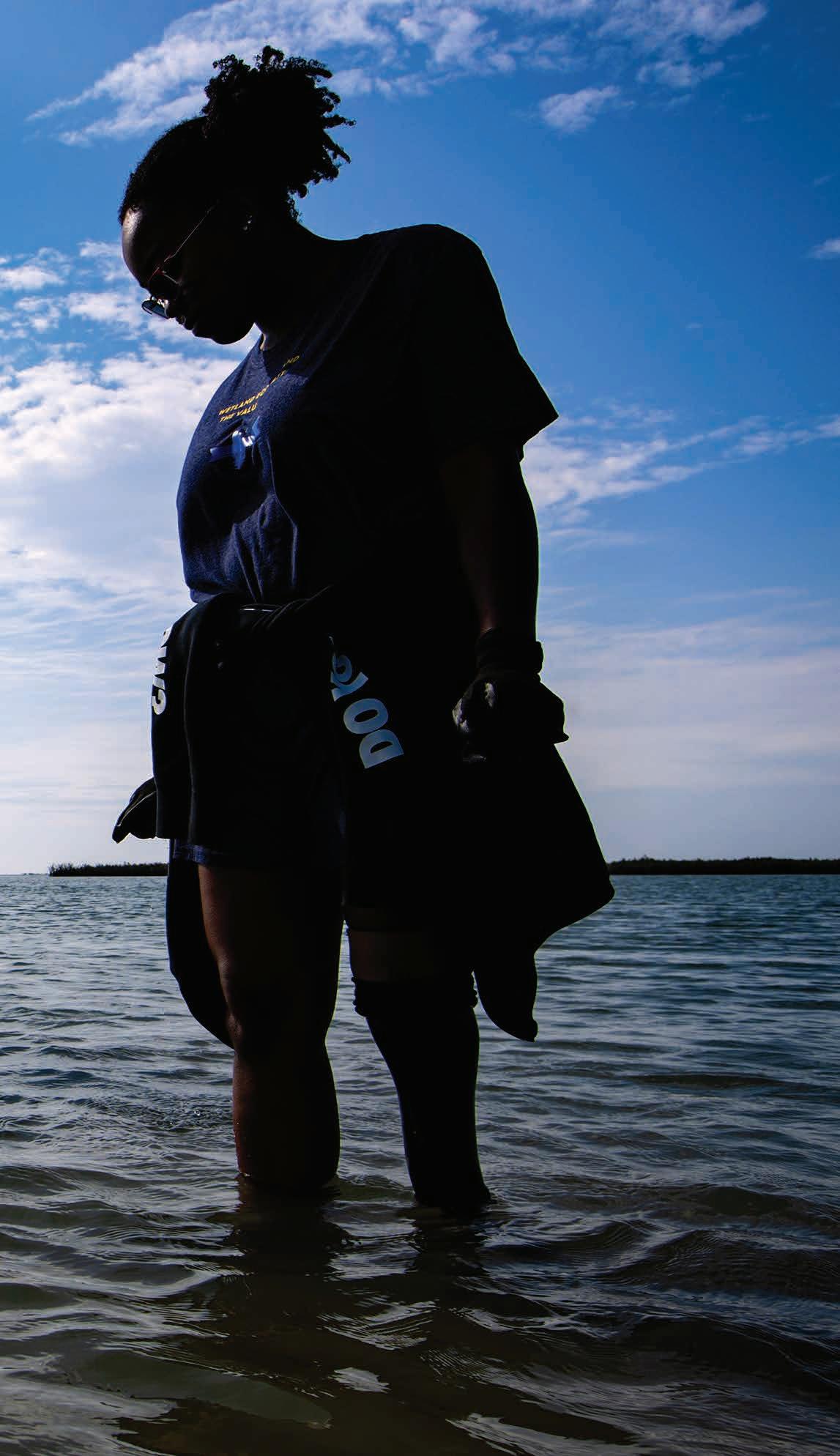
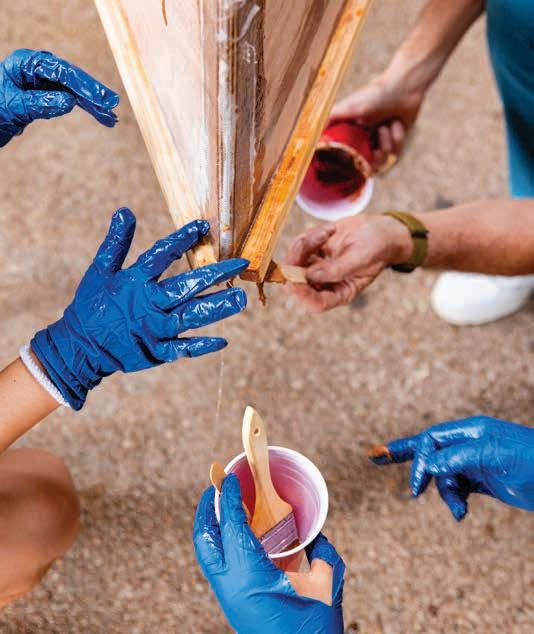
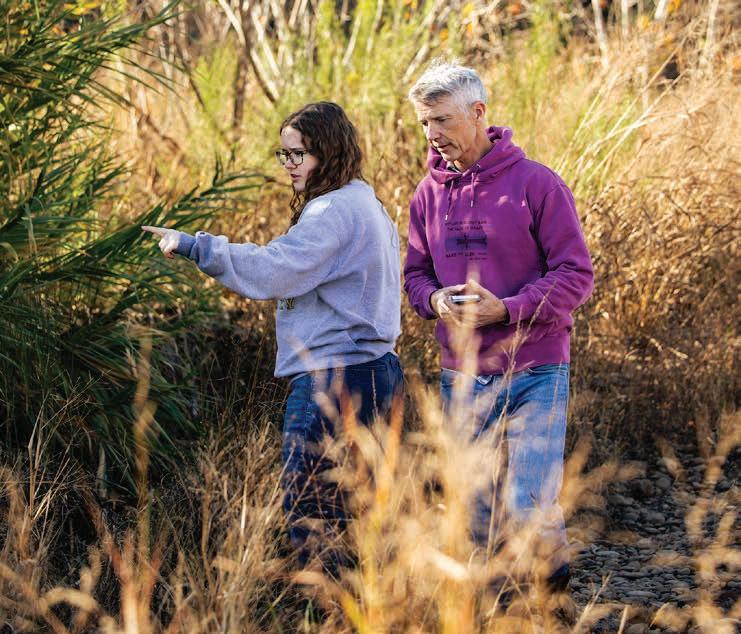
Munday Library archive captures the unfolding history of the Texas craft brewing scene.BY SARAH LINDENFELD HALL
LIKE MANY 20-SOMETHINGS, Connor Schee ’20 enjoyed a craft beer on the weekend. But in January of his senior year, when the Communication major attended Hillhops, an event that celebrates the Texas Craft Brewing Collections at the Munday Library, a new world of hops-filled career possibilities opened up to him. From the breweries and beer experts gathered at the event, he realized beer wasn’t just a beverage, but the foundation of a growing industry that he could join.
“It kind of pivoted from enjoying drinking to, ‘Holy cow, this is a business,’” says Schee, who took a job at a Fort Worth-based craft brewery after graduation and eventually became its head of business development. Today, he dreams of opening his own craft brewery.
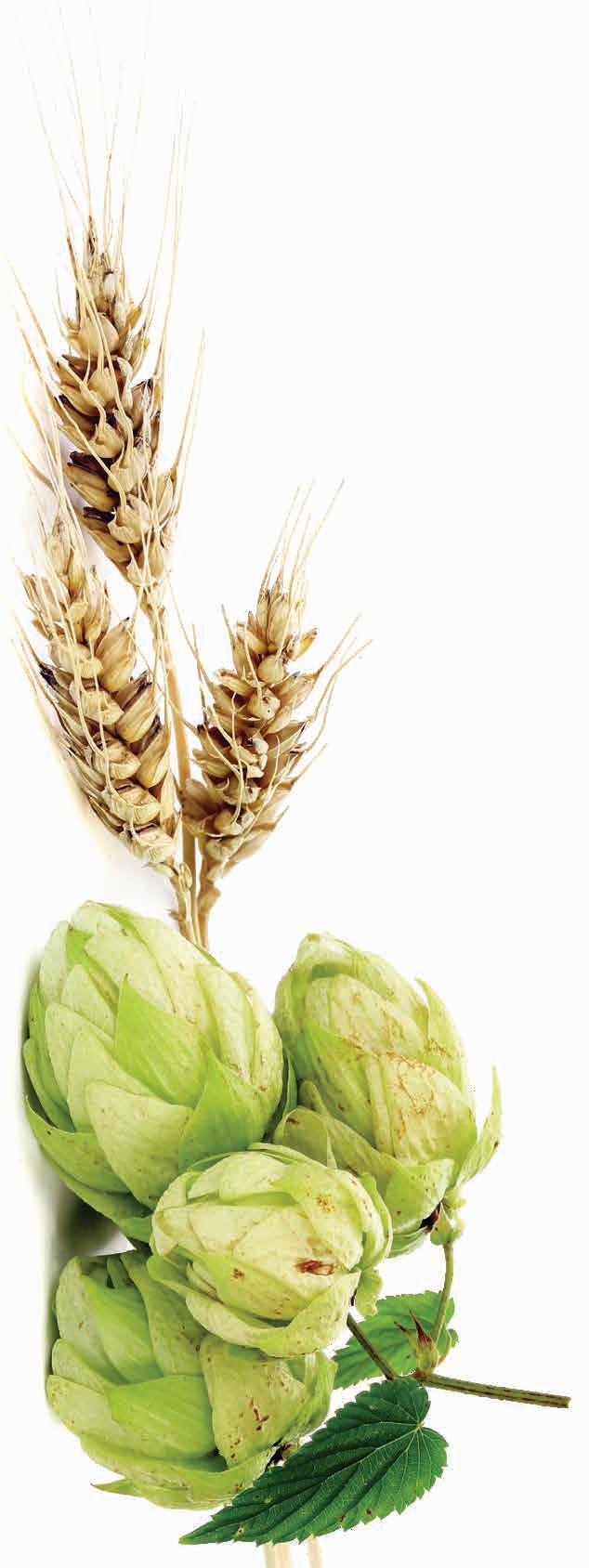
Hillhops showcases the Texas Craft Brewing Collections, launched in 2017 to preserve the history of craft breweries as it unfolds. Researchers access the archive year-round to explore subjects from brewpub business history to shifting aesthetics in graphic design.
The collections hold artifacts from more than 180 breweries across Texas, including brewpub-branded Frisbees; stickers and coasters; business records; and menus. Many items can be seen at TexasBeerArchive.org. The annual Hillhops event provides a place for students and the community to learn about the industry and view items from the collections. Brewers bring their expertise and ephemera to St. Edward’s, and students who want to intern at breweries connect with prospective employers.
It’s not the stereotypical “stuffy and old” campus archive, but a living collection of items familiar to any brewpub visitor, says Travis Williams, who manages the collections as part of his job as archivist and special collections
Hops are a key ingredient for IPAs and many other top-selling craft beers in the United States.
librarian at the Munday Library. “It’s been a wonderful tool to shake up people’s notion of what an archive is.”
The St. Edward’s brewing collection is one of a handful like it in the United States. It currently focuses on craft brewing in Texas since the 1990s, when state law legalized brew pubs as we know them today, Williams says. But the future holds plenty of room for expansion. Williams recently began adding pieces from Texas distilleries. Items from Texas wineries and pre-1990s-era breweries could follow. The archive is made possible thanks to a Texas-wide effort. Brewers and other industry professionals send in trinkets and tokens, and Williams goes hunting, too. His message to brewers is this: Let me preserve your story. “Any day I can say: ‘Hey, I want to make sure that the next generation remembers you,’” says Williams, “that’s a pretty good day.”


180 260
1.3
breweries represented in the collection attendees at Hillhops in January 2024 million barrels of craft beer produced in Texas in 2023
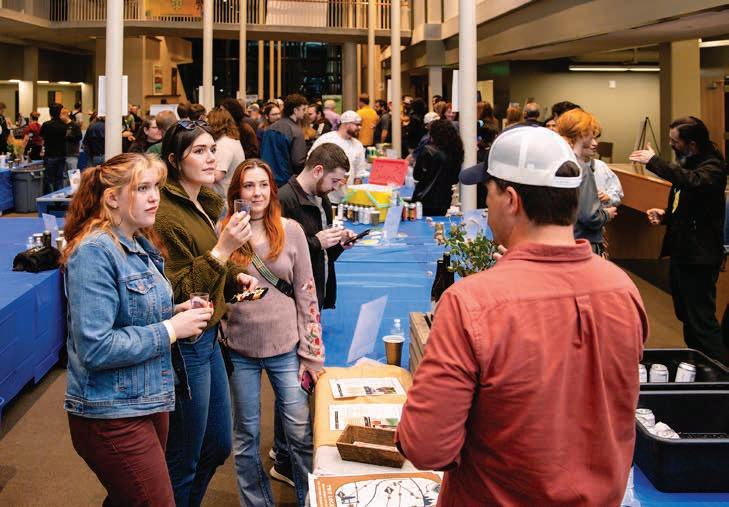
Each year, craft brewers and related agencies from around the state are invited to the hilltop to network with students and faculty during Hillhops.
Athletes share what it takes to compete in some of St. Edward’s newest varsity sports.BY ROBYN ROSS
As part of a five-year expansion of Hilltopper athletics, STUNT and indoor track will join the St. Edward’s lineup of NCAA Division II sports and the highly successful esports team. Coaches and athletes share their perspectives on what it takes to be the best.

Carlos Barrera, a sophomore studentathlete from Katy, plans to extend his running season by participating in indoor track.
St. Edward’s fields teams for both men and women in cross country and in track and field, where athletes compete primarily in distance events. The addition of indoor track will extend the running season through the entire academic year and add opportunities for sprinters. Athletes will participate in all three sports, transferring their gains in one season to the next.
“Running is a cumulative activity,” says head coach Steven Cary. “If you want to be great, you’ve got to practice consistently. Indoor track will give our athletes a chance to work on their craft throughout the year.” St. Edward’s athletes tested the waters at two indoor meets in 2023, and the new indoor track team will compete starting in December.
How indoor track is different: The track is a 200-meter oval, half the distance of an outdoor track, with banked turns (the outer lanes on the curves are slightly elevated). The shortest sprint events, such as the 60-meter dash, are run on a straight track in the middle of the loop. Kinesiology major Carlos Barrera ’26 says that among all three running sports, “You have to be the most aggressive on the indoor track since so many people are fighting for position in a compact space. And the spectators are right there in front of you, so it makes it a much more electric environment.”
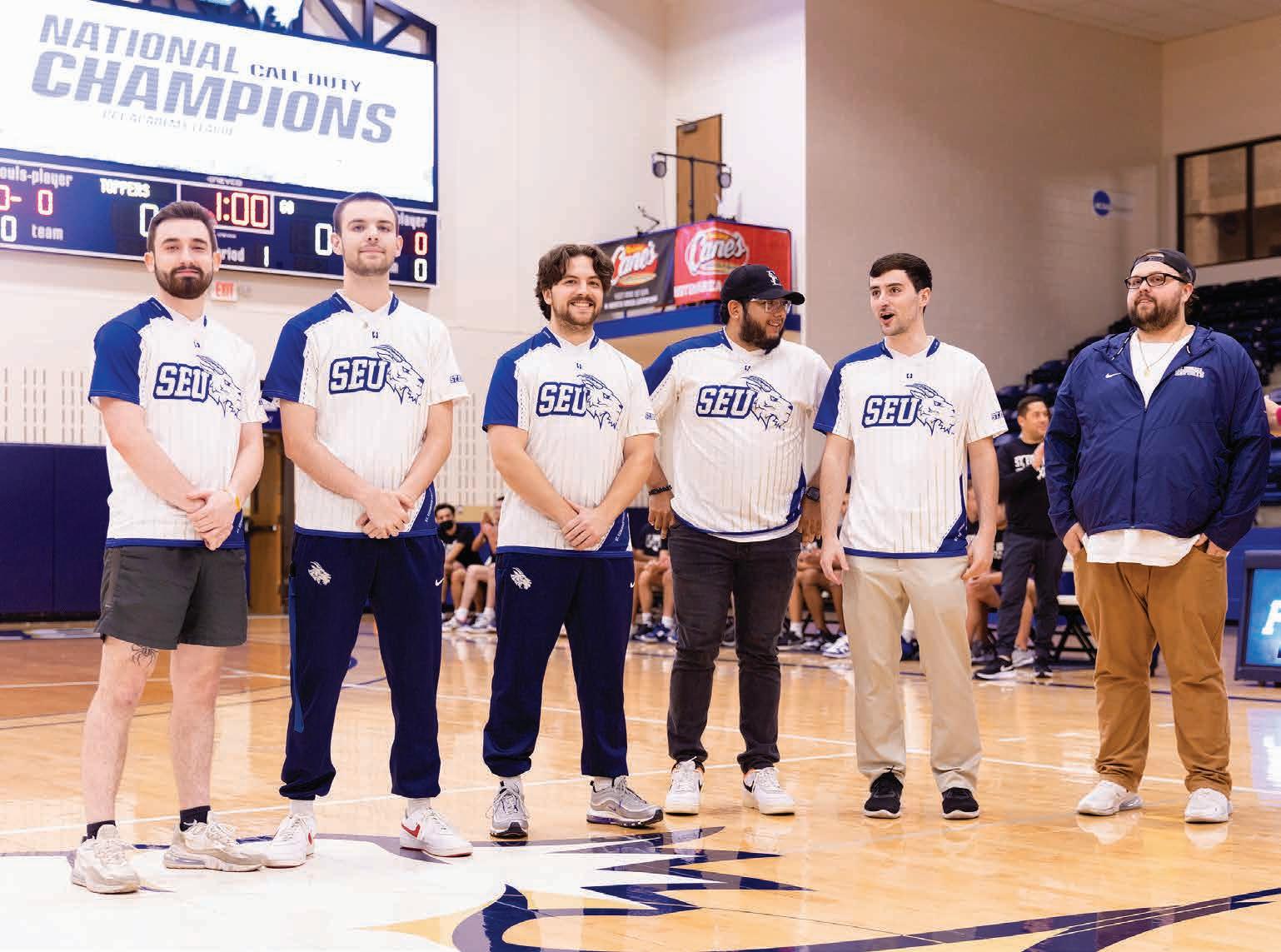
The St. Edward’s esports team has made waves in competitive gaming since it launched in 2019, advancing to the playoffs or elite leagues in multiple events. The university competes in game-specific leagues that include coed teams from schools of all sizes. In the Call of Duty Academy League, one of two Call of Duty divisions, St. Edward’s won the national championship in 2022.
What it takes to be a champion: Like athletes in any sport, exceptional esports players communicate well, handle pressure and manage time effectively, says coach Sterling Henderson. Plus, “Overall health in body and mind impacts reflex time, which is massively important in esports,” he says. “A lot of our esports athletes take their overall health a lot more seriously.”
That’s true for Computer Science major Mauricio Pallares ’25, who plays for the main Call of Duty team, which has twice finished sixth in the nation. Because esports players aren’t limited by physical exhaustion the way athletes in traditional sports are, they’re able to play more — and to get really good, Pallares says. Players log many hours of daily playing time, plus film review. To maintain balance, Pallares works out regularly — as much for his mental health as for the physical benefits — and reads philosophy to keep his mind sharp. “What you do outside of the game really affects what you do in the game,” he says.
The 2022 esports Call of Duty Academy League national champion team was recognized during the Homecoming pep rally.
The emerging NCAA women’s sport of STUNT turns technical elements of cheerleading — pyramid building, tumbling, tosses — into a dramatic competition. Matches are divided into four quarters, each dedicated to a specific skill. The two competing teams perform side by side, executing the same movements — such as a basket toss, in which teammates throw one of their own high in the air as she does a backflip. Judges award points for execution and difficulty, and one team is declared the winner at the end of each round.
Cheer and STUNT coach Austin Wilder is building a team of 16 who will compete in spring 2025. He anticipates the roster will overlap with cheerleading but that STUNT also will attract women who are drawn to the strength and precision of STUNT more than the traditional vocal chants and performative elements of cheerleading.
What makes a good STUNT athlete: Coordination, overall strength, grip strength, precision, timing and “explosiveness.” Wilder says athletes always need to be tuned in to their teammates for the sake of both performance and safety. “You’ve got to stay in the moment and be focused.” BOOKS
CHRISTI LANAHAN WAS “a happy person with an infectious smile and magnetic personality,” her mother says. On Oct. 26, 1985, the 20-year-old junior at the University of Texas was struck and killed by a hit-and-run drunk driver as she walked with friends in downtown Austin.
While mourning their loss, Christi’s mother, Susan Cox; stepfather, Don Cox ’69; and brother, Sean Lanahan; searched for community resources to support grieving families. Finding inadequate options, the family started a nonprofit in 1987 to help others navigate loss.
Today, the Austin-based Christi Center continues to honor its original mission to provide support to grieving families for as long as they need it. Don Cox estimates the Christi Center has helped more than 100,000 people in its 37 years.
“This grief work is an extension of my faith,” he says. “Giving back, that’s where the healing comes from. Bereavement forces you to surrender what you know. I still have occasional ‘dark nights of the soul,’ when I experience doubting, fearful thoughts. Today, I talk to Christi about the things I need help with, and I thank God often for all I have been given.”
The Coxes recently released a book, For the Love of … Christi: Death and Grief Met by Love and Hope, where they share their own experiences with grief as well as stories from other members of the Christi Center. Austin writer Terri Schexnayder ’04, who has been involved with the center since its inception, compiled many of the stories, and Angela Smith, former public relations director for St. Edward’s, edited the book.
“There’s no one-size-fits-all approach to grief,” Don Cox says. “We hope our love for Christi fills others with hope in the face of their grief. You can’t lead the life you led before, but you can still have a very meaningful life. With great effort, we reinvented ourselves and found hope. We want to help others do the same.”
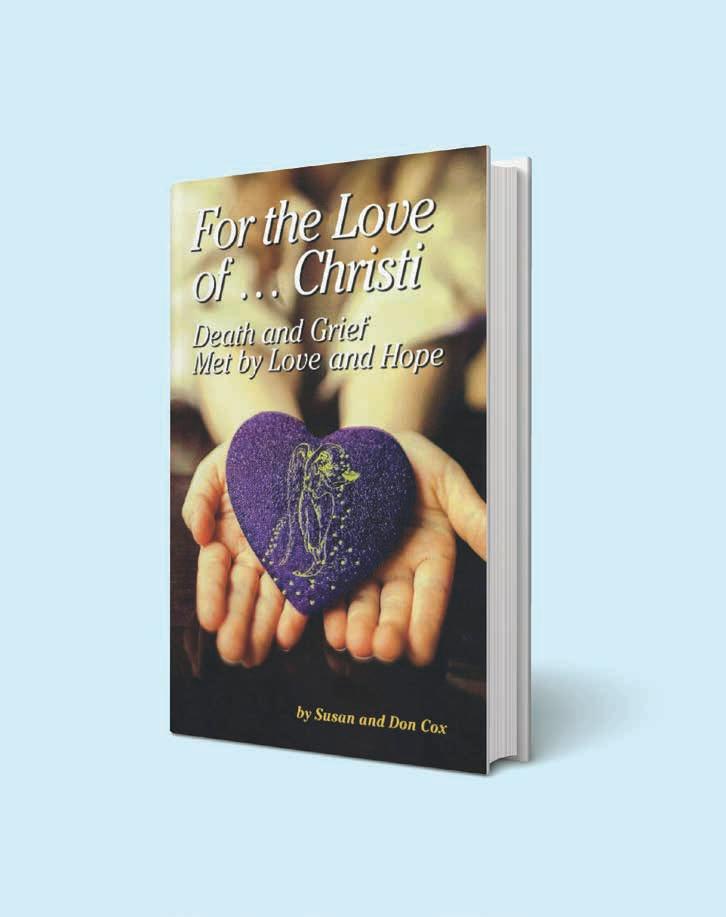
334 pages
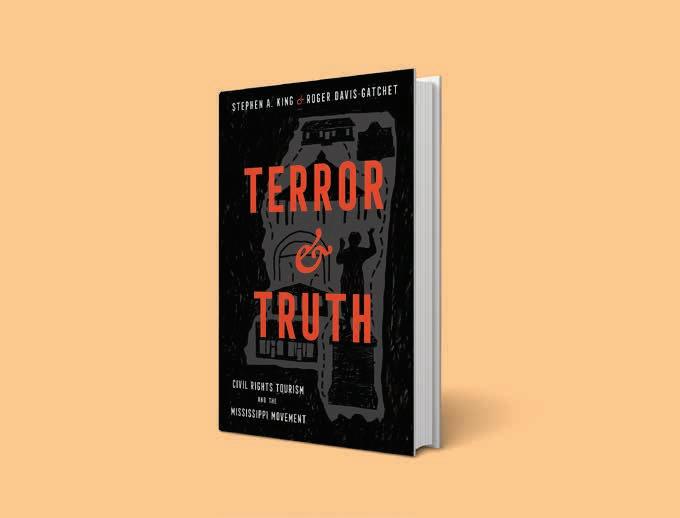
University Press of Mississippi
294 pages
JOHN KNORR, PROFESSOR OF Kinesiology, knows a thing or two about St. Edward’s University athletics. He was the head baseball coach from 1977 to 1985 as well as during the 1991 and 1992 seasons. He led the university’s intercollegiate sports programs as director of athletics for more than 20 years and was inducted into the St. Edward’s Athletics Hall of Fame in 2012.
To write St. Edward’s University Athletics: A History from Saints to Tigers to Hilltoppers, Knorr spent more than five years researching the key figures and fascinating stories that make up the university’s competitive sports legacy.
Athletics have crowned the hilltop from the very beginning. Early on-campus games and intramurals in the late 19th century evolved into the first organized campus sport of baseball. The university experienced a period of athletic excellence during the 1920s and ’30s, most notably in football. The 1970s brought the establishment of women’s sports and a gradual ascendancy to a regionally competitive National Association of Intercollegiate Athletics program. As the university transitioned to a NCAA Division II program in 1999, it could look back on more than a century of athletic achievement.
“So much can be learned from how an institution has evolved,” Knorr says. “I am hopeful this book will adequately tell the story of athletics — trials, tribulations and success — and pay homage to all those who were a part of the programs over the years. I also hope to kindle positive memories for those who coached and played.”

The History Press
368 pages
IN TERROR AND TRUTH: Civil Rights Tourism and the Mississippi Movement, authors Stephen A. King, professor of Communication, and Roger Davis Gatchet, an associate professor of Communication and media at West Chester University in Pennsylvania, examine how the state confronts its history of racial violence and injustice through civil rights tourism.
Prior to arriving on the hilltop in 2018, King taught at Delta State University for many years. The university is located in the Mississippi Delta, a region promoted as the “birthplace of the blues” as well as a hotbed for civil rights activism during the 1950s and 1960s.
“During the early 2000s, I started to see the state of Mississippi become actively involved in promoting its rich blues heritage through cultural tourism,” King says. “It soon became apparent that local, regional and state tourism officials were employing several rhetorical strategies — including manipulating the past through public memory — to serve larger goals associated with tourism such as economic development and image management.”
King’s research on blues tourism culminated with the publication of I’m Feeling the Blues Right Now: Blues Tourism and the Mississippi Delta in 2011. Truth and Terror is an extension of his interest in how Mississippi is remembering its past. How is Mississippi, a poor, racially divided state with a long history of systemic racial oppression and white supremacy, actively packaging its civil rights history for tourists? Whose stories are told? And what perspectives are marginalized in telling those stories?

St. Edward’s alumni fight for health equity and access in the clinic, the lab, the halls of diplomacy and even the medical school classroom.
 BY ROBYN ROSS
BY ROBYN ROSS
ILLUSTRATIONS BY VALENTIN
TKACH
The St. Edward’s mission stresses the obligation of all people to pursue a more just world.
Our alumni in health sciences fields do just that: they care for vulnerable and marginalized patients; they bring mental and physical care to where they’re needed most; and they work to create a more accessible health system for all.
As part of Strategic Plan 2027, St. Edward’s is developing a new distinctive school and innovative academic programs in health sciences that will attract enrollment and produce graduates ready to meet community needs. This bold initiative builds on the university’s tradition of academic excellence through programs that center access, inclusion and equity in addition to professional skills and leadership. Here, we highlight 19 of our alumni who make a difference every day in the lives of patients around the world.
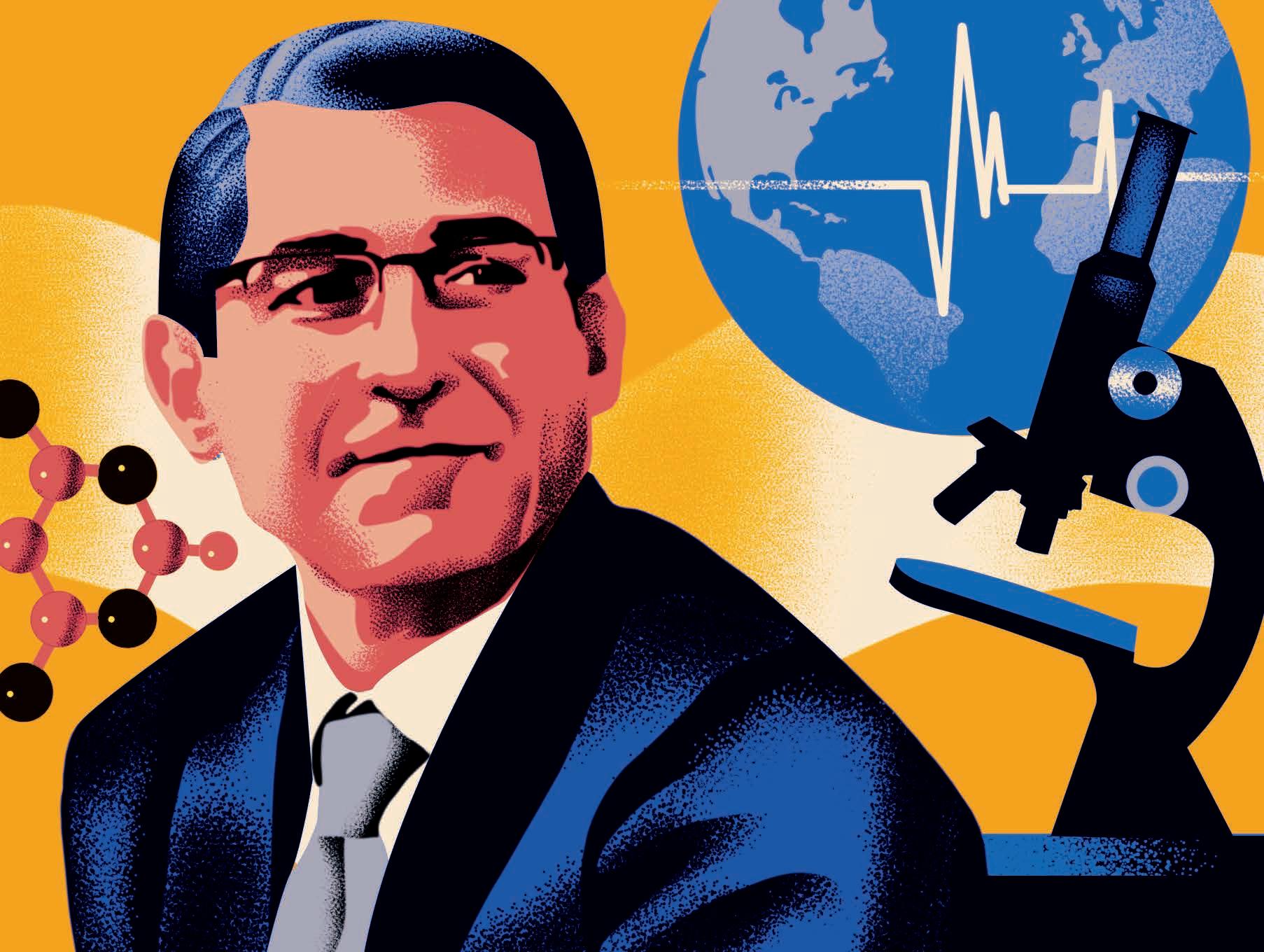
Acluster of people in Houston get sick after eating at a fast-food restaurant. It turns out the tomatoes in their food, which came from Panama, were contaminated. How many other shipments of the tomatoes reached the U.S.? How many people are at risk of illness? The case quickly reaches the desk of Nelson Arboleda ’94, Biology, who contacts the Centers for Disease Control and Prevention and the Food and Drug Administration as well as officials in Panama who can track down the tomato farm and contain the outbreak.
Stopping the spread of a foodborne illness is all in a day’s work for Arboleda, a physician and the director of the Americas within the Office Secretary at the U.S. Department of Health and Human Services. Working with his counterparts in the 35 countries of the Western Hemisphere, Arboleda coordinates prevention and control efforts for the HIV epidemic and diseases such as malaria and cholera. His team also works as “disease detectives,” tracking down the sources of outbreaks or of contaminated food.
Arboleda and his colleagues work to mitigate the health impacts of climate change such as intensified hurricanes and extreme heat, as well
as the spread of mosquito-borne diseases such as dengue fever and chikungunya. They craft measures to address a hemisphere-wide shortage of healthcare practitioners that leaves gaps in the workforce everywhere from crowded Rio de Janeiro to rural West Texas. And as violence and economic instability prompt more people to migrate toward the United States, Arboleda and his international counterparts try to ensure that migrants have access to immunizations, antiretrovirals for HIV, and care for their mental and physical health along their journey and at their destination.
Arboleda, who holds advanced degrees in both medicine and public health, grew up in Miami and was recruited to the soccer team at St. Edward’s. There, his interactions with students in the College Assistance Migrant Program opened his eyes to the challenges faced by people with fewer opportunities. As he moved into adulthood, he realized these experiences had attuned him to the needs of the disadvantaged, whomever and wherever they may be.
“In our office, we’re trying to meet people where they are — to improve their health and their access to health services,” he says.
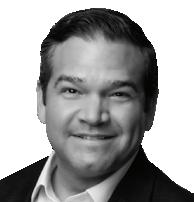
As CEO of Community Health Systems of Laredo, Enrique Gallegos ’02, Business Administration, faced the challenge of bringing robust healthcare options to his border town. Like many far-flung communities in Texas, Laredo — a city of 300,000 — has a shortage of primary care doctors as well as specialists such as cardiologists, urologists, oncologists and surgeons. Many people who need healthcare travel to San Antonio, two and a half hours away, but not everyone can leave. Recruiting doctors to the border is sometimes difficult because of the perception that it’s unsafe. To bring young doctors to the region, Gallegos and his team launched residency programs in family medicine and internal medicine at Laredo Medical Center in partnership with the University of the Incarnate Word School of Osteopathic Medicine. The initiatives were a success: Many graduates have stayed in Laredo and opened practices there. The healthcare system also partnered with the government of Zapata County, a rural area south of Laredo, to create a clinic

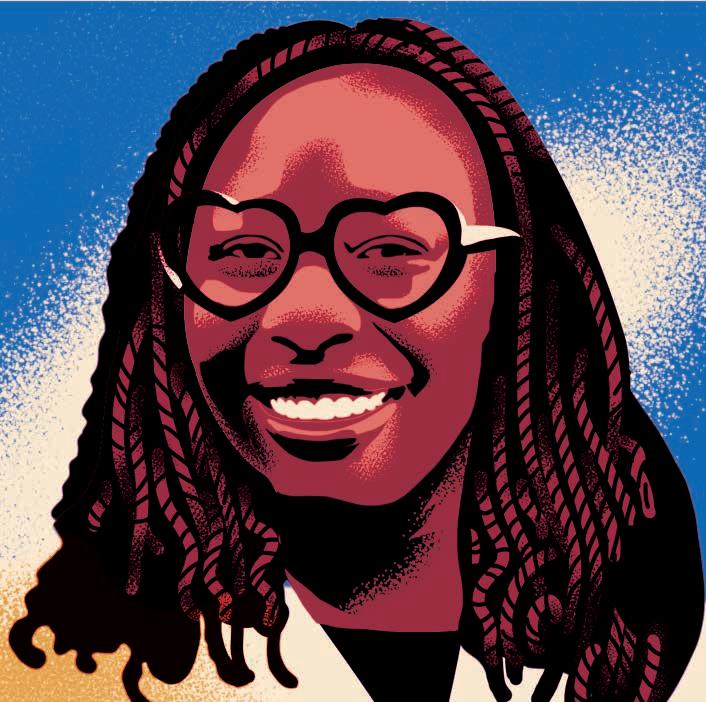
A native of Uganda, Elizabeth Kaweesa ’13, Biochemistry, saw her community plagued by illnesses including HIV infection, tropical diseases and cancer. As a student at St. Edward’s, she decided to use research to advance human health. In the lab of now-retired Professor of Chemistry Henry Altmiller, she studied how heavy metals could be transferred from contaminated soil into bean plants, which could have repercussions for
where patients could see a practitioner closer to home. “It’s rewarding to see what a well-run healthcare organization can do in the community to improve quality of life,” Gallegos says.
Alejandro Torres ’20, Biology, found his career path when he interned at a dental practice in his South Texas hometown. “Dentists have the remarkable ability to not only enhance smiles, but also instill a profound sense of self-worth and confidence in each patient,” he says. During his St. Edward’s education, with the support of the Johnson-Turpin CAMP Enrichment Endowment, he spent a summer as a dental volunteer in the South Indian city of Madurai. Torres lived with a host family and worked at a hospital, where he assisted with general dentistry and oral-maxillofacial surgeries. He also witnessed extreme poverty, air and noise pollution and electricity shortages, even in the hospital — conditions that inspired him to serve marginalized communities in need of dental care. Torres grew up seeing
people who ate the beans. She went on to earn a doctorate in chemistry from the University of Florida and is now a postdoctoral researcher at the University of Illinois Chicago, where she works to combat ovarian cancer, the fifth-most-deadly cancer in women.
Kaweesa screens compounds isolated from natural sources as new potential drug leads against ovarian cancer cell lines obtained from patient tumors. When a compound kills the cancer cells, she and her colleagues investigate what dosage is necessary and what mechanism is at work.
The answers to those questions inform future research.
Kaweesa also tests these drug leads against cell lines that have developed resistance to current chemotherapy treatments. “This will give us more insight into new drug treatments and therapeutic strategies needed for better prognosis, because cancer cells are pretty smart,” she says. She also works with outreach programs that educate and

migrant farmworkers like his father neglect their oral health simply because they didn’t have the money. Now in his second year of dental school at the University of Texas Health Science Center at San Antonio, he plans to return to the Rio Grande Valley, open a dental practice and give scholarships to first-generation students like himself.

Sabri Zooper ’18, Biology, graduated from the Texas College of Osteopathic Medicine and is completing a family medicine residency in Corpus Christi. A former athlete, she plans to focus on sports medicine, emphasizing both mental and physical wellness in her practice. Throughout medical school, Zooper advocated for the needs of minority students by serving on the leadership board of the Student National Medical Association, the country’s oldest and largest organization for medical students of color. “As part of the Black community, I know representation within the medical field is important,” she says.
support disadvantaged communities in Chicago with high rates of cancer. Through these initiatives, she hears the perspectives of cancer survivors who sometimes have struggled to access treatment. “It’s one thing to do research on cancer, but it’s another to sit down with people who have gone through treatment and hear how it affected them and their family,” Kaweesa says. “It reminds me that the work I do is important.”
Chelsea Elliott ’12, Communication, is founder and executive director of the nonprofit organization half Helen, which provides routine vision and medical eye care to children, families and seniors in underserved areas via two mobile eye clinics.
It reminds me that the work I do is important.


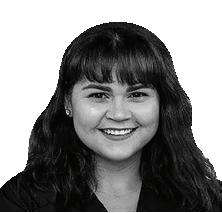
As she completes her doctorate in clinical psychology at Palo Alto University, Alicia (Torres) Marmolejo ’18, Psychology, is interning at the Veterans Affairs healthcare center in Albuquerque, N.M. She works with veterans with severe mental illness (SMI) such as schizophrenia, bipolar disorder, severe depression and severe post-traumatic stress disorder — a population she “fell in love with” during a St. Edward’s internship at a group home for people with SMI. “It helped me realize there’s so much more that can be done to help folks with SMI live a meaningful life with the right support,” she says. Marmolejo plans to become a clinical psychologist and apply her training in mindfulness meditation to help veterans with SMI.
Mayra Ortega ’18, Behavioral Neuroscience, is a mental health therapist for middle and high schoolers in Fabens a small town a half-hour drive southeast of El Paso. Many of the families she serves lack transportation to the healthcare resources of El Paso, and many speak limited English. As the town’s de facto ambassador for mental healthcare, Ortega attends health fairs and gently pushes back against the stigma that prevents some residents from seeking support. Ortega grew up in a small town in the region and understands the challenges Fabens residents face. “I’m able to provide some insight and give back to a community that’s very similar to where I grew up, so I’m grateful to be here,” she says.
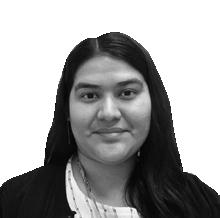
David Gomez ’77, Behavioral Health, is the director of outreach and diversion for The Other Ones Foundation, an Austin nonprofit that helps people experiencing homelessness obtain work and temporary shelter. He has worked for decades in community-based mental health services.
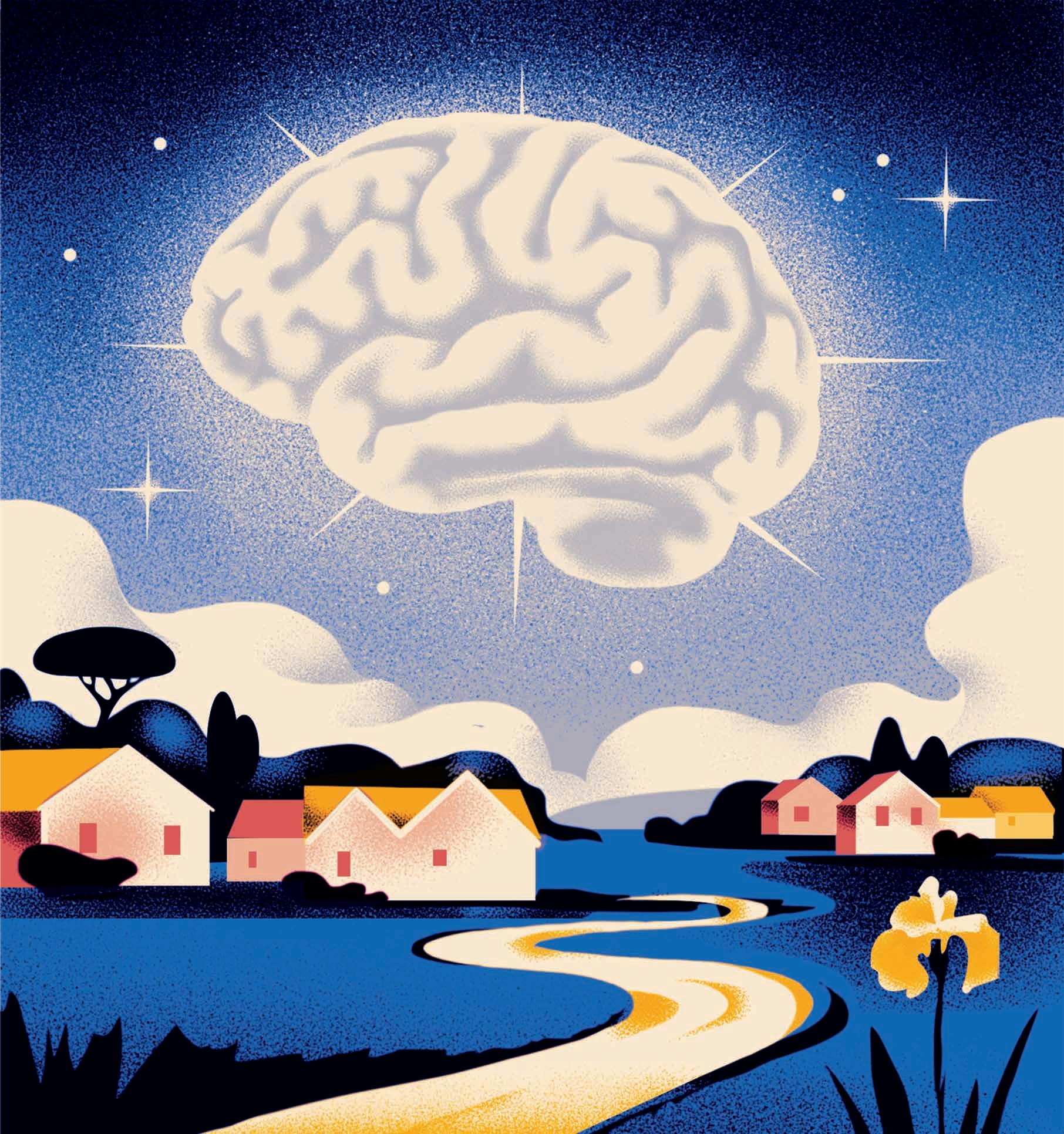
Sean Sebesta ’97, Psychology, is chief of the traumatic brain injury program at the William Beaumont Army Medical Center at Fort Bliss in El Paso and will direct the Fort Bliss Intrepid Spirit Center, currently under construction, which focuses on treatment of TBI and associated PTSD.
Ana Vielma ’19, Psychology, is completing her doctorate in educational psychology with a specialization in human development, culture and learning sciences at the University of Texas at Austin. Her research explores the emotional complexity of the firstgeneration college student identity with particular attention to the academic, financial and social impacts of the COVID-19 pandemic.
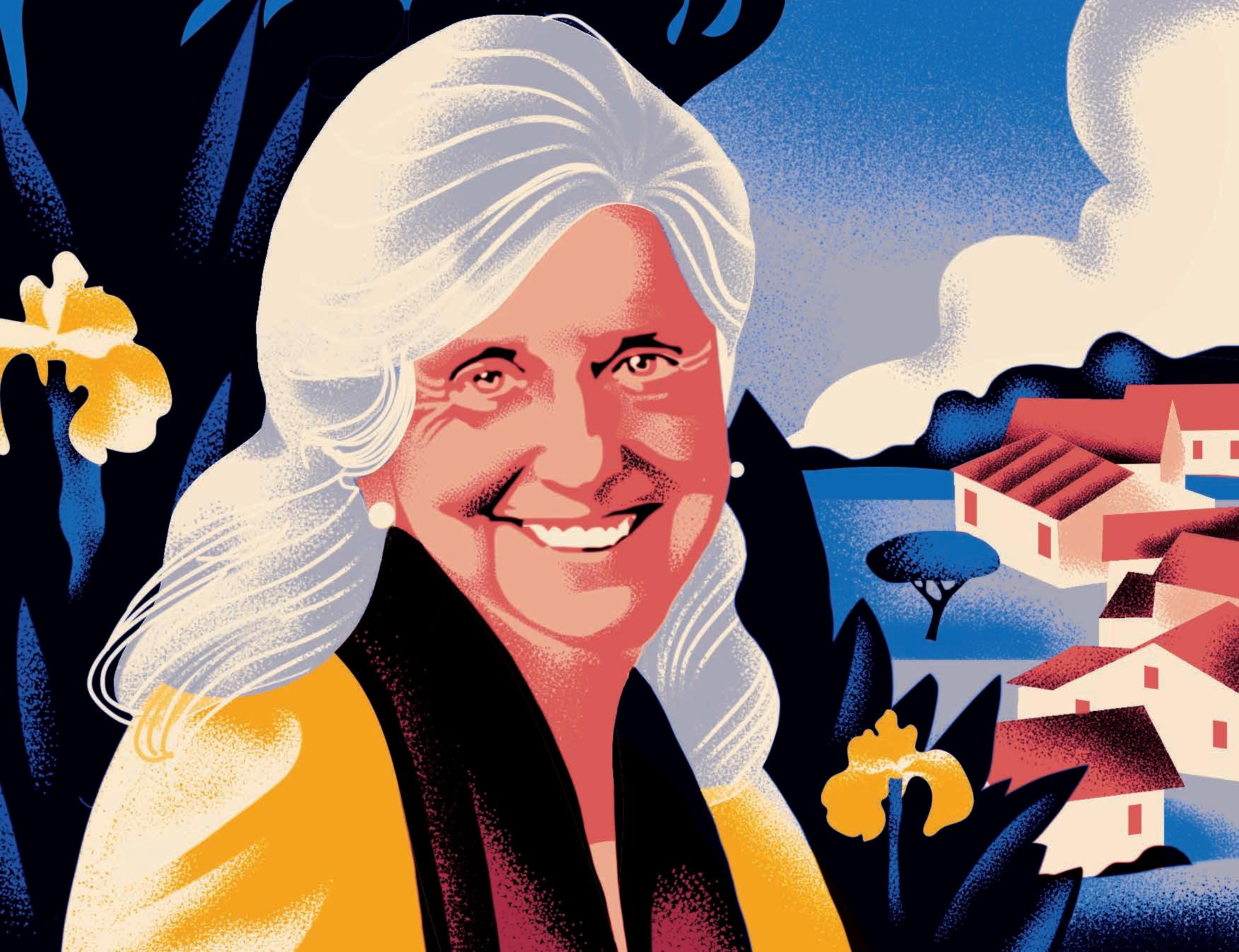
In 1979, pediatrician Chris PlaucheJohnson ’71, Biology, saw a young patient named Matt. The little boy was excited about going to a special summer camp for kids with disabilities — the same camp where Plauche-Johnson once had been a volunteer counselor. But at his next appointment, Matt cried as he explained camp hadn’t worked out. The staff had determined that his leg braces, multiple medications and the fact that he was on dialysis made him too complicated of a case.
Matt’s tears were a catalyst for PlaucheJohnson, who had long dreamed of starting a camp for severely disabled children. Six months later, she brought Matt and about 30 other kids — along with a host of doctors, nurses and medical support staff — to a rented summer camp, where the children delighted in participating in modified sports, canoeing, swimming and horseback riding. It was the first session of the Children’s Association for Maximum Potential, or CAMP, for which Plauche-Johnson was the volunteer executive and medical director for 25 years.
Plauche-Johnson’s concern for people with disabilities blossomed during her St. Edward’s years, particularly during a medical mission trip to Mexico with her advisor, Brother Daniel Lynch, CSC. She began volunteering at the camp for
children with disabilities in the summers. After graduation, she worked as a dorm counselor at the Texas School for the Deaf, where she applied skills she’d developed as a resident assistant in East Hall.
In 2007, as she prepared to retire as professor of pediatrics at the University of Texas Health Sciences Center in San Antonio, Plauche-Johnson experienced a series of coincidences — sacred synchronicities, she calls them — that convinced her to start working with people who were homeless. She became a volunteer and later the director of the San Antonio Catholic Worker House, which provides meals, showers, a laundromat and mail service to the unsheltered. But the services didn’t get anyone off the street. Plauche-Johnson led a coalition that purchased the 17-acre site of a drive-in movie theater and began building tiny houses for clients who are at least 50 years old, disabled and chronically homeless. The property, called Towne Twin Village, opened in spring 2023 and houses 65 people. Eventually it will comprise 204 homes.
With their basic needs met, residents can begin to think about living healthy, getting jobs, making new friends and reconnecting with family. “Health and housing are integrally related,” Plauche-Johnson says. “It’s hard to be healthy when you’re living on the street. And a home can really promote dignity and healing.”
It’s hard to be healthy when you’re living on the street. And a home can really promote dignity and healing.
Phase 1: Dash Line
Phase 2: Solid Line
Phase 3: Dotted Line
N


“My OB-GYN practice focuses on menopause, which, unfortunately, most doctors don’t learn much about in medical school. I sought out most of my training and my certification on my own after residency just because I was interested, and I encourage our local medical residents to learn more about this field.
Women will come to me with debilitating menopausal symptoms, such as hot flashes, mood swings and terrible insomnia. They’re in their mid- to late 40s, working, taking care of their family, at the peak of their life — and all of a sudden, they can’t function. But their doctors have told them, ‘This is normal, just wait it out.’ This is partly because medical education glosses over menopause and partly because of problems decades ago with early versions of hormone replacement therapy and misinterpretation of an early study regarding its safety.
Even though hormone replacement poses minimal to moderate risk for most women, many doctors still perceive it as very risky
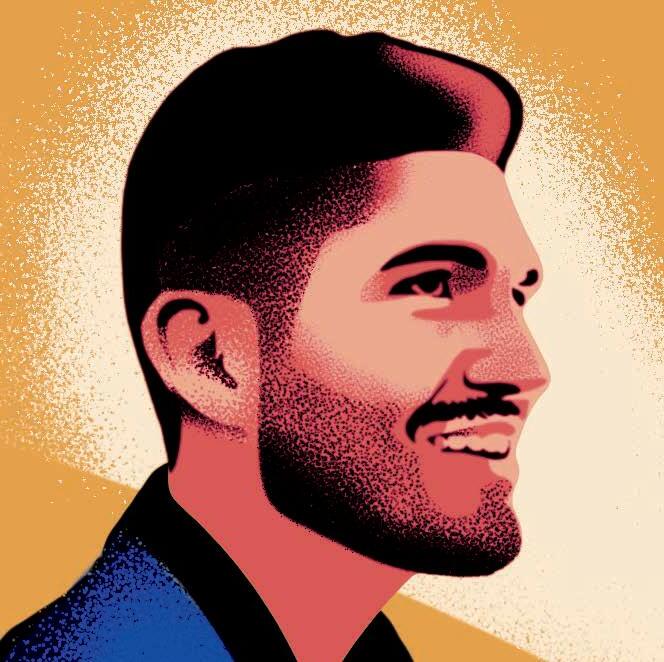
Diego Rivas ’18, Biology, graduated from the UT Health School of Dentistry in Houston and moved to New York City to complete a pediatric dentistry residency at Brookdale University Hospital in Brooklyn.
“I chose pediatrics because in dental school, every time I rotated in pediatrics, I had so
and are reluctant to prescribe it. I try to help patients understand their individual level of risk, as well as the benefits and alternatives, to make an informed decision about treatments that could give them better quality of life. Menopause affects half the population, and it’s crazy to think we’re telling women to just wait it out.”
A second-year resident physician at the University of New Mexico, Danielle Rivera ’14, English Writing and Rhetoric, is an outspoken advocate for equity through the American Medical Association.

Rivera represents the Resident and Fellow Section of the AMA’s House of Delegates and has authored resolutions supporting equitable treatment for medical students with disabilities. For example, she advocated for the National Board of Medical Examiners to adopt a more flexible protocol for granting testing accommodations to medical students with disabilities.
Students with ADHD or chronic fatigue might need more time to take the exam, she explained, but that has no bearing on their ability to serve effectively as doctors. “The medical field has a huge blind spot when
much fun. I could sing and dance and be silly while also making a difference for the kids. Pediatric dentistry has a significant hospital component because it’s very difficult to do dentistry on small kids without sedation. If they have really bad decay, abscesses or infections, we take them to the operating room to get the work done; sedation makes it less traumatic and less likely they’ll remember it.
I’m working in a county hospital in Brooklyn in one of the most underserved parts of all New York City. We see patients with all kinds of health disparities, very low socioeconomic status, and low health literacy. We see lots of immigrants and refugees, and I speak with patients in Spanish all the time. I also get to use my French — which I learned at St. Edward’s during my semester in Angers — because we get a lot of French-speaking Haitian and West African patients.
it comes to disability — despite caring for people with disabilities,” she says. “I’m trying to change that.”
Cara Dahlhausen ’16, Behavioral Neuroscience, advocates for the healthcare needs of a marginalized population: people who use illegal drugs, as well as those harmed by drug policies. The philosophy of harm reduction starts with an acknowledgment that this drug use occurs — even if society disapproves. “That’s the reality, so we want people to do that as safely as possible so they don’t end up with additional problems like hepatitis or HIV,” she says. “It’s meeting people where they are.” Advocates distribute supplies such as clean needles, fentanyl testing strips and the overdose-reversal drug naloxone. Dahlhausen, who first got involved with harm-reduction efforts after taking former Associate Professor of Psychology Kelly Green’s class about chemical dependency issues, is also a member of the AustinTravis County Public Health Commission, an all-volunteer advisory board that ensures that local health policy decisions prioritize equity.
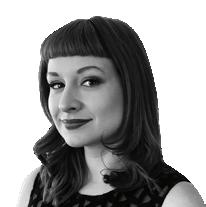
Recently, we had a 5-year-old patient whose parents came from rural Guatemala, where they spoke primarily Mayan dialects and very limited Spanish. They didn’t realize that the food here in the U.S. has a lot more sugar than what they ate in Guatemala and can cause severe early childhood cavities.
This child had abscesses, facial inflammation and incredible pain, so we gave him antibiotics and took him to the OR to extract the decayed teeth and save the ones we could with crowns. Then I spoke with the parents as best I could in Spanish to educate them about nutrition and dental health. Another thing that I love about pediatric dentistry is that parents will do anything for their kids, so they’re very receptive — they ask questions, and they’re really interested in what’s best for their child.
I’d like to practice pediatric dentistry in a Spanish-speaking area of Texas — the kind of place
that is typically underserved — and try to make a difference in the community. That would be really meaningful.”
I’d like to practice pediatric dentistry in a Spanish-speaking area of Texas — the kind of place that is typically underserved.

Noor Mahmoud ’11, Biology, earned a Master of Public Health in epidemiology and biostatistics from Texas A&M University and works in clinical trials for a clinical research organization in the United Arab Emirates.
Shawn Terryah ’08, Biology, is a division vice president of data science for the hospital group HCA Healthcare, where he works on projects that enhance patient safety, optimize nurse scheduling and improve the discharge process.
Saida Wiltz ’23, Biochemistry, is a post-baccalaureate scholar at the Center for Cell and Gene Therapy at Baylor College of Medicine in Houston, where she is researching immunotherapies that are alternatives to chemotherapy for pediatric lymphoma patients. She plans to apply to MD/ PhD programs to continue her research as well as advocate for people of color in medical settings. Wiltz ultimately wants to become a pediatric oncologist.

Texas is the state with the second-most-critical need for nurses, a shortage that has become more acute as the population grows. To meet the community’s need for compassionate, equity-minded healthcare professionals, St. Edward’s launched three programs leading to a Bachelor of Science in Nursing in 2023.
Among them, the distinctive Registered Nurse-to-Bachelor of Science in Nursing degree prepares practicing nurses for more advanced leadership positions.
St. Edward’s welcomed Donna Beuk, a critical care nurse, as its founding director of nursing. Beuk holds a doctorate of education in instructional leadership with a specialization in nurse education, and her research focuses on the use of simulation in nursing education.
The profession of nursing increasingly emphasizes health equity and awareness of health disparities and the social determinants of health. This justice-oriented perspective has always been woven into a St. Edward’s education and is a natural fit with its nursing curriculum.
“The St. Edward’s BSN program is fundamentally designed to integrate the values of diversity, equity, inclusion and social justice across teaching, learning and service opportunities to support and expand a more diverse nursing profession,” Beuk says.
To advance health equity in Central Texas, St. Edward’s created a certificate in Advanced Spanish for Health and Helping Professions in Fall 2022. The four-course sequence — offered asynchronously online — is designed for students who are already fluent in Spanish and focuses on terminology and cultural expression relevant to nursing, medicine, social work, psychology and kinesiology. It culminates in an internship where students are immersed in work with the Spanish-speaking population: answering phone calls, interpreting for patients and translating letters and forms.
In addition to learning vocabulary for anatomy and for diseases that disproportionally affect the Latinx population, students develop cultural competence and study the nuances of communicating with Spanish speakers from different countries. Graduates of the program will fill a critical gap in the region’s healthcare infrastructure, says Professor of Spanish and Associate Dean of Arts and Humanities Georgia Seminet “The need for bilingual social workers and nursing staff is tremendous in Texas and in all the border states in the Southwest,” she says.
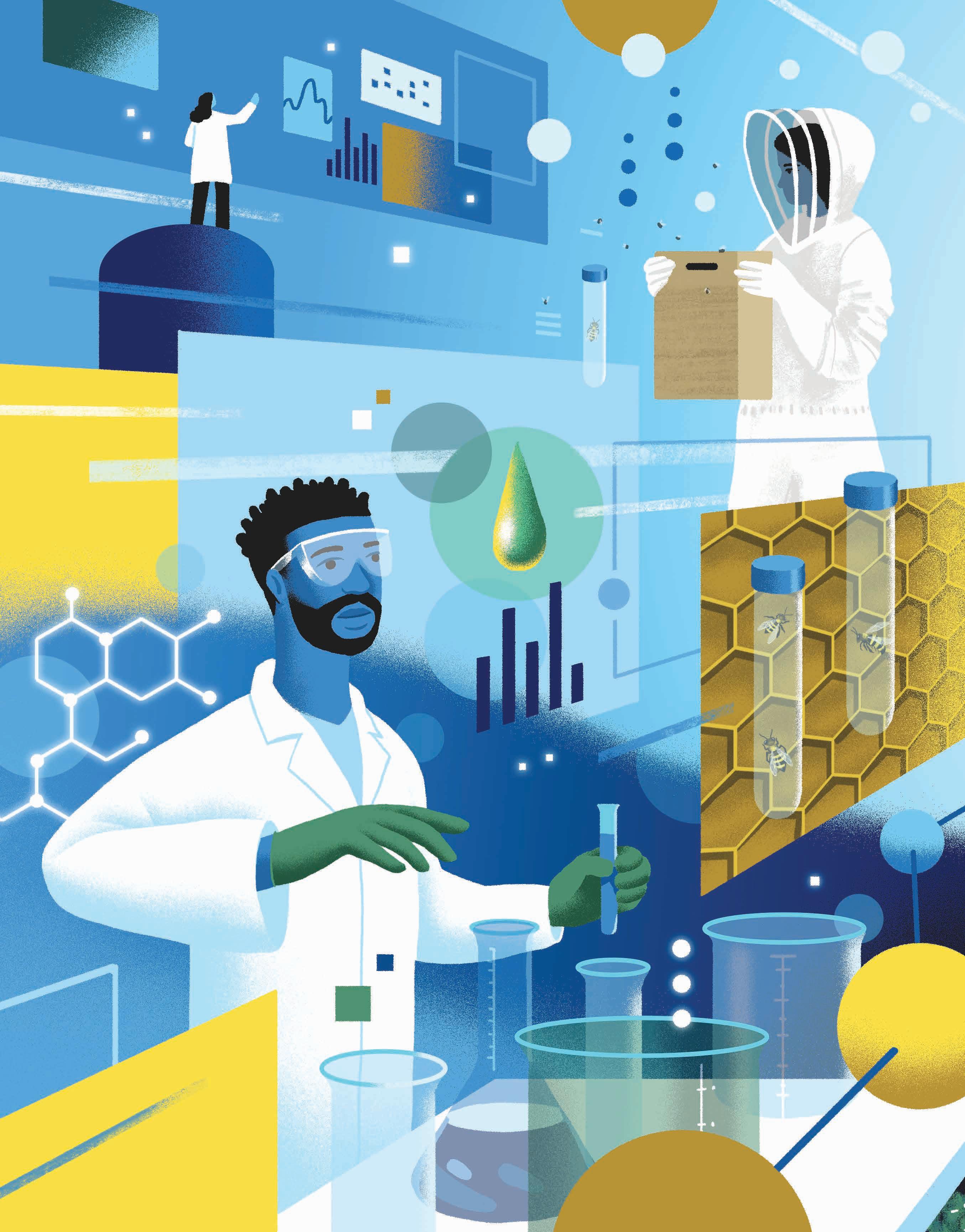

In a sometimes bleak world, scientists at St. Edward’s have hope in abundance.
Illustrations by Matt Chinwortht’s easy to feel
overwhelmed by the bad news: the world’s reluctance to abandon fossil fuels, the volume of food that goes to waste, widespread loss of species diversity, the persistence of discrimination and bias. But the School of Natural Sciences at St. Edward’s offers an antidote. Every day, professors and students conduct research aimed at solving the planet’s thorniest problems.
Last June, St. Edward’s announced a piece of very encouraging news: It had been awarded the largest single grant in its history. The $5 million NextGen grant from the U.S. Department of Agriculture’s National Institute of Food and Agriculture will benefit undergraduate students who plan to enter careers in food, agriculture, natural resources and human sciences.
President Montserrat Fuentes called the grant a “historic investment” that will strengthen the university’s ability to educate scientific and agricultural leaders who better represent individuals from all walks of life.
The grant provides funding for the School of Natural Sciences’ “From Education and Experiential Learning to Employment: Cultivating the NextGen of Natural Resources and Food Science Leaders (E3)” program, which positions the university as a leader in developing a diverse group of scholars who will transform agriculture and promote sustainability.
The teaching and research excellence at St. Edward’s — which the NextGen grant will further advance — makes faculty enthusiastic about what the future holds. In these pages, we explain why.
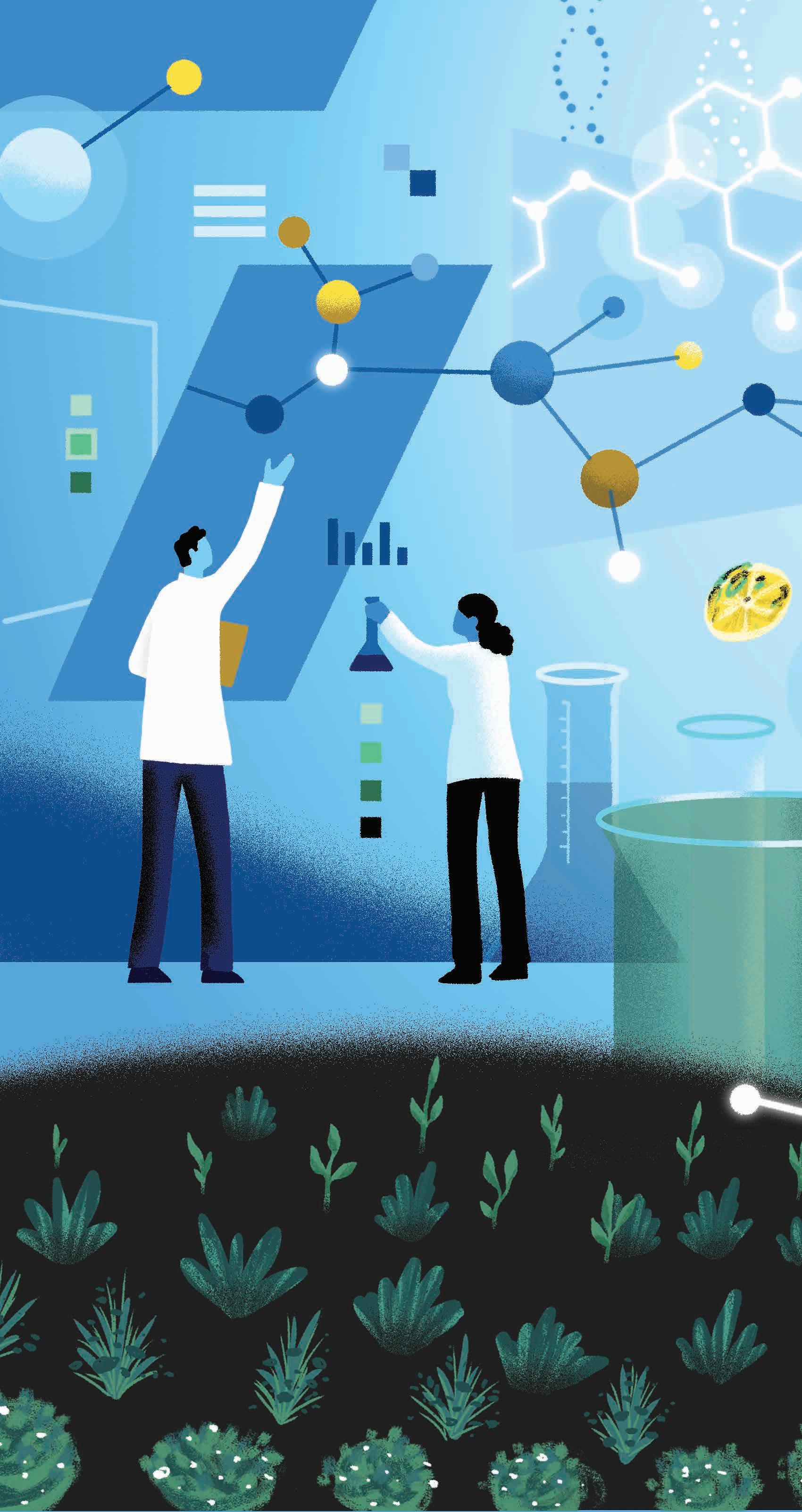
1In the not-toodistant future, biofuels might come from food waste instead of corn.
they’re interested in how it can make dough rise. When Assistant Professor of Biology Claire Edwards considers yeast, she’s thinking about a different kind of dough — money — and how developing new sources for biofuels can make it an economically attractive alternative to fossil fuels.
The primary biofuel in the U.S., ethanol, is made from feed corn. It takes large quantities of this plant — which is otherwise used as livestock feed or the base of processed food ingredients such as corn starch and corn syrup — to make ethanol. Edwards and
her students are studying the potential of a unique strain of a yeast organism, Saccharomyces cerevisiae, commonly known as brewer’s yeast, to reduce reliance on corn for ethanol. An enzyme that it produces efficiently breaks down pectin in the cell walls of a particular chain of sugars found in abundance in peaches, apples and citrus fruits.
This research has the potential to open new, economically competitive avenues for biofuel production. For example, at the end of the growing season, the ground at commercial orchards is covered with rotting fruit that was damaged by weather or simply not picked in time.

Edwards’ research could turn this wasted resource into new materials for biofuels.
Wasted food like fallen fruit would just get disposed of anyway, and Edwards’ project could give that waste a second life. “The idea is trying to find ways to make the process more realistic and financially competitive.”
YOU’VE PROBABLY READ THE HEADLINES over the last decade: Honeybee colonies around the world have disappeared suddenly and in alarming numbers. The Environmental Protection Agency characterized the phenomenon as posing a major long-term threat to bees.
A serious problem for honeybees is a serious problem for people. A third of what we eat depends directly or indirectly on their pollinating activity, and the USDA estimates that managed honeybee colonies add at least $18 billion to the value of U.S. agriculture annually.
The causes of this mysterious collapse are thought to be myriad and synergistic. Climate change, pesticides, diseases that target honeybees, and shrinking plant diversity in cultivated areas all take their toll.
“When you look at it, you’re like, ‘Oh my gosh, this is an overwhelming problem,’” says Matt Steffenson, an associate professor of Biology and co-project director for E3.
But inside this cacophony of causes is a note of hope. “When you’ve got all of these little factors adding up together, we don’t necessarily need to solve all of them,” Steffenson says. “If we can work on potentially mitigating one or two of the factors, that might be enough to give the bees a breather to bounce back.”
His research focuses on how honeybees allocate energy toward their immune functions. “If bees have more energy to put into fighting off disease, pathogens and pesticides in their bodies, that puts them on better footing to withstand other threats,” he says.
How can honeybees fortify their defenses? Steffenson’s research
Scientists don’t fully understand honeybee colony collapse, but a St. Ed’s professor is conducting research to help beekeepers take action.
translates into advice for beekeepers about how to promote stronger immune function within their colonies. For example, after beekeepers harvest honey, they typically return the empty honeycomb to the hive. However, Steffenson and his students have found that not returning the honeycomb is likely a better practice because it forces the bees to rebuild it. To do so, bees need to forage more for nectar, their source of food. This increased activity actually raises their energy and production levels, which equates to more proteins that can be used for immune function.
“It also means these colonies need to be located in an area with adequate resources to support this level of foraging,” he says. So beekeepers need to place their hives in areas with abundant flowering plants and grasses. “If bees have more energy to put into fighting off pathogens and dealing with pesticides in their bodies, then maybe that puts them on a better footing to withstand the synergistic effects that may be causing colony collapse.”
The old stereotype that only older white men are scientists is disappearing as a new, diverse generation enters the field.
That’s a simple exercise
Jonathan Hodge, dean of the School of Natural Sciences, assigns in his seminar for firstyear students. “Most people will draw the Einstein figure, right? The white guy in the lab coat,” he says.
The same is true of his students, at least at the beginning of the semester. But things change quickly. He remembers when a Latina woman spoke up in class about her all-too-typical drawing. “She said something like, ‘I am here to study science, and the picture that I drew didn’t look anything like me.’
There was a recognition that she had internalized these stereotypes” — even at a university where more than half of science students are women.

Hodge’s seminar, called Science, Media and Social Justice, teaches students to examine and critique representations of scientists and science in news media and popular entertainment. If students can learn to interrogate these portrayals, they can start to reverse stereotypes about themselves, their
classmates and the scientific profession more generally — stereotypes that hurt efforts to diversify scientific fields. Science thrives on diversity of thought, which leads to innovation. This is an important lesson for all students, no matter their background.
“It’s good for students to recognize the ways in which they’ve experienced privilege that they might not have named before,” Hodge says. “It’s good for the men in class, for example, to see the way that women scientists are sometimes objectified and sexualized even when they are featured in the media. We’re using the familiar context of news and pop culture to have these really rich and meaningful discussions.”
The goal, he says, is that “as students move forward, they take these perspectives into the work that they do. That fits right in with the mission of the university. We want to educate scientists who are not only technically competent, but who are thinking about the social and ethical implications of their work.”
We’re using the familiar context of news and pop culture to have these really rich and meaningful discussions.”
We want to educate scientists who are not only technically competent, but who are thinking about the social and ethical implications of their work.” “
Fueled by the NextGen grant, St. Edward’s will prepare the next generation of scholars to address some of the world’s most pressing problems.
Trish Baynham, professor of Biological Sciences, is the project director of the NextGen grant and is leading its implementation.
“There are a million ways to make the world a more just place,” she says. “For me, it’s educating students. I feel like that’s my contribution. The most important questions are, ‘What’s happening to your grads? Are they living a good life? Do they have work that they love, and are they helping other people? Are they making the world a better place?’ I think that we’re all attracted to St. Ed’s because of the Holy Cross mission. There’s this idea that you don’t just fill someone with knowledge. You tell them to listen to what it is that they value.”
Bill Quinn is easing into retirement after a 40-year career at St. Edward’s. When he had an active research program, his primary interest was photosynthetic activity in plants. In the meantime, he oversaw a wide variety of undergraduate research projects and challenged students to develop their own research questions.
One student researched how the mere sound of running water influenced the way the roots of certain pea seedlings grew. Others studied topics such as soil respiration, salamanders, watershed quality and the effects of fire on plant associations.
These St. Edward’s graduates will address the world’s agricultural challenges and develop solutions for a sustainable and just future. “Agriculture is everything between the earth and your mouth,” Quinn says. “It’s a very big, integrated system that needs our attention.”
He points to Biology graduate Gretchen Kroh ’13. After St. Edward’s, she went to work for the USDA Children’s Nutrition Research Center and then to graduate school at Colorado State University, where she earned a doctorate in botany. She is now chair of an advisory board for the St. Edward’s NextGen grant. Kroh is just one example of “incredibly accomplished, bright people working on some serious problems,” Quinn says. “They fill me with optimism.”
Undergraduate research prepares St. Edward’s graduates to tackle scientific challenges.
1
It provides funding for the School of Natural Sciences’ “From Education and Experiential Learning to Employment: Cultivating the NextGen of Natural Resources and Food Science Leaders (E3)” program.
2
It includes support for more than two dozen four-year scholarships, 80 internships, curricular innovations and more.
3
It is meant to increase the retention and graduation of a diverse group of students interested in food, agriculture, natural resources and human sciences careers. The grant will launch them into careers as researchers, administrators and advocates who play a critical role in feeding the world and maintaining natural resources.
This project is supported by the NextGen program of the U.S. Department of Agriculture’s National Institute of Food and Agriculture (Award No. 202370440-40159).

1
Break down barriers to understanding. Visually appealing design can distill complicated information — such as government policies that affect people’s lives — and make information accessible and engaging.
2
Envision a better future. Art can inspire people to act. For example, a depiction of an ecologically sustainable city can motivate people to turn that vision into reality. “Art helps people imagine a future beyond what they’ve seen,” Valle says.
3
Tell compelling stories. “Art gives space to stories,” especially those of marginalized communities, Valle says. “Stories create empathy and bring people together.”
Designer, illustrator and painter Edith Valle ’16 uses her creative skills to advance social justice.
BY MARLA HOLTArt and design have always fascinated Edith Valle ’16, a Graphic Design graduate and CAMP scholar, but as a kid she wasn’t quite sure how to turn that interest into a career.
“I had a very narrow view of graphic design as mostly concert posters and album covers,” Valle says. She hadn’t yet seen how art and design could be used to change minds or bring awareness to
injustices such as the unfair working conditions faced by migrant laborers like her parents.
Then, in her sophomore year at St. Edward’s, she interned with a legal aid firm in North Carolina through Student Action with Farmworkers. The nonprofit trains college students to work in services that support migrant farmworkers.
That experience — and
the visual journal she created about it — marked a turning point in Valle’s life. “I began to see graphic design as a tool for education and action,” she says. “The more I learned about my culture and about issues important to me, the more I could see my art as a platform for advocacy.”
Today, Valle uses her creative skills to advance social impact causes and inspire others. She is the
art director of Deeds Not Words, which develops leadership skills in young women of color. At Deeds, Valle launched an artist-in-residence program to mentor young creatives and founded The Galvanizer, a quarterly zine by, for and about young women.
As a self-employed designer, Valle also creates murals, illustrations and brand materials for Austin-
area businesses. “My design practice and my art practice cross over a lot,” says Valle, whose style reflects her heritage and is influenced by religious iconography, bright color palettes and the beauty of brown skin.
“My design work feels most impactful because I’m helping people understand social issues, but as an artist, I’m always striving for beauty.”
Meet three Hilltoppers making a mark in their fields.BY MARLA HOLT
 Max Kunik ’13, Entrepreneurship CEO, Wingman Kitchens
Max Kunik ’13, Entrepreneurship CEO, Wingman Kitchens
A leg up: At its heart, Wingman Kitchens, a culinary coworking space, is about helping food entrepreneurs flourish. With locations in Austin and Houston, Wingman supports caterers, bakers, mobile food vendors and other fledgling foodies in need of a commercial kitchen. “Our clients can prepare food at Wingman without incurring the steep operating costs that come with having to establish their own kitchens,” Kunik says. “They’re able to use our space until they have the stability to go out on their own.”
“My education cultivated a desire to help immigrants and elevate their experiences.”
AMBER HEBERT ’16


LMSW, Louisiana State Refugee Coordinator, Catholic Charities of the Diocese of Baton Rouge
Welcoming the stranger: As coordinator of Louisiana’s state refugee resettlement program, Hebert, a licensed master social worker, administers grants to local resettlement agencies that do the hands-on work of helping refugees access housing, healthcare, employment and education. “We advocate for refugees, helping them navigate structural barriers to achieve self-sufficiency,” Hebert says. “We also foster a more empathetic understanding of immigrant populations.”
Quenching thirst: Hicks and his business partner, Victor Guardiola — a University of Texas graduate, have channeled their entrepreneurial spirits to build Bawi Agua Fresca, a thriving sparkling fruit juice company. “We give traditional Mexican agua fresca a healthy makeover with less sugar and
Building trust: “I love being invited into people’s lives at a vulnerable time to learn about their cultures and their experiences and then to be able to help them with what they need,” Hebert says. Her work is informed by Catholic social teaching and values she learned at St. Edward’s, particularly through a Los Angeles Service Break Experience with undocumented workers and a Capstone project on sanctuary cities. “My education cultivated a desire to help immigrants and elevate their experiences.”
Co-founder and COO, Bawi Agua Fresca
a stronger fruit profile,” Hicks says. In 2023, the company was projected to earn $1.3 million, and the partners were named to the Forbes “30 Under 30 Local” list for Austin. From the ground up: Hicks and Guardiola started serving Bawi at farmers markets in 2019 — when they were still students
— as a not-yet-shelfstable drink on ice. The tasty beverage proved popular, and eventually, the pair raised enough venture capital to launch the brand in 2022. It’s been a whirlwind ever since, and Bawi is now sold in select grocery stores across the country.

The Holy Cross mission guides a father-daughter duo toward careers in public service.BY SARAH LINDENFELD HALL ILLUSTRATION BY EDITH VALLE ’16
HECTOR OCHOA ’81 thrived in the small community on the hilltop, where he received individualized attention and honed his writing skills. At St. Edward’s, he discovered the Holy Cross mission to create a more just and humane world reinforced lessons from his childhood in McAllen, Texas.
“It really aligned with my own family’s philosophy that when you get an education, it’s going to help you, but that education was meant to be shared with others,” he says. “St. Edward’s infuses that in everything that they do for their students: Your profession should also be your vocation.”
Ochoa’s daughter, Victoria Ochoa ’15, a Holy Cross and Presidential scholar, blossomed at St. Edward’s, too. Immersed in the Hispanic-Serving Institution, she found a community with the space and support to discover her vocation. “Professors were
supportive on the professional front but were more invested in your personal growth,” she says.
That family connection to St. Edward’s and its Holy Cross mission have sustained the Ochoas’ successful careers in public service today.
Hector, who earned a PhD in school psychology from Texas A&M University, has spent his career in higher education. In leadership positions at schools including San Diego State University and the University of New Mexico, he’s helped underserved students transform their lives with a college degree.
In August 2023, he became the third president of Texas A&M University-San Antonio, which, like St. Edward’s, is one of 39 U.S. institutions holding the Seal of Excelencia for intentionally serving Latino students.
Victoria was the first student at St. Edward’s to win the prestigious Truman Scholarship
Six members of the Ochoa family, including Hector and Victoria, have attended St. Edward’s.
The Festival of Lights is a favorite event for both Hector and Victoria. Hector attended the very first one in 1980 and was excited to learn that Texas A&M-San Antonio has a similar event called Lights of Esperanza.
When the Ochoas are back in Austin, you’ll find them at the Magnolia Café, where Victoria spent many late nights studying. “Magnolia was an integral part of my St. Ed’s experience,” she says.
for students planning careers in public service. The award supported her as she earned joint degrees in law, from the University of Pennsylvania, and public policy, from the Harvard Kennedy School. Internships have taken her to roles in the White House and the United Nations.
In 2023, she was awarded the two-year Cozen Family Voting Rights Fellowship from the Carey Law School at the University of Pennsylvania, to support the work of the American Civil Liberties Union’s Voting Rights Project across the country.
Hector is incredibly proud of his daughter’s successes. And Victoria is thankful for his mentorship and the foundation they both built at St. Edward’s. “It’s an amazing, fantastic privilege,” she says. “The impact of St. Edward’s ripples through generations.”
Three university staff members share how St. Edward’s nurtures Hilltoppers from their classrooms to their professions.
BY SARAH DICKENS HILLTOPPER CONNECTION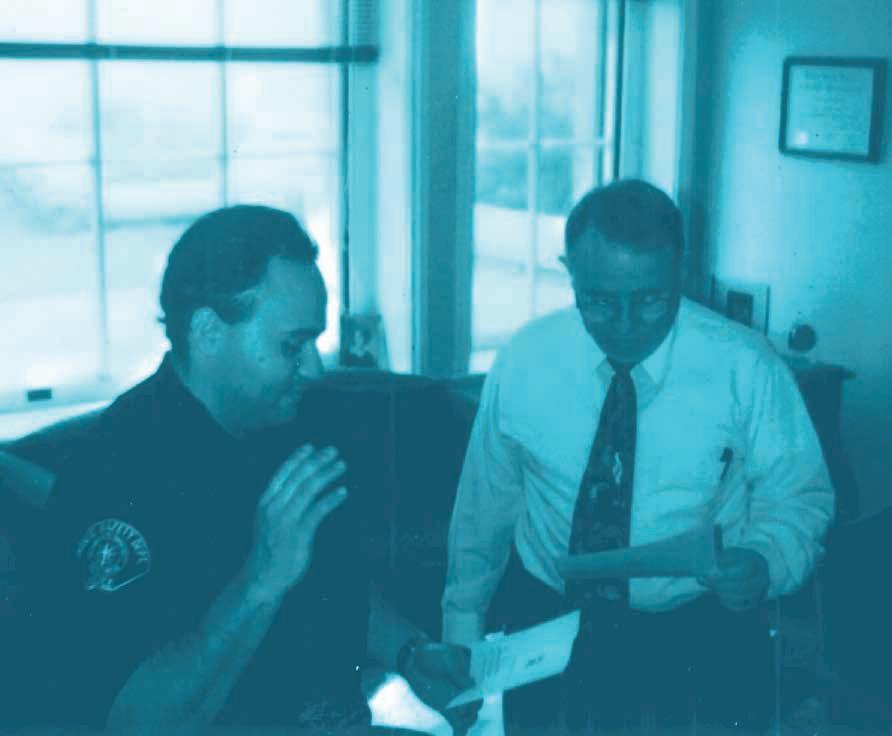
for 26 years
“WORKING AT ST. Ed’s, I get to help students learn to take care of themselves — and each other,” says Huerta, chief of police and director of police services at the university. As a student, Huerta worked at the bookstore when it was located in Main Building and for the University Police Department in parking enforcement and providing security services at basketball games. After earning his degree and graduating from the San
Antonio College Law Enforcement Training Academy, Huerta returned to St. Edward’s to serve Hilltoppers, a job that includes working with student staffers in UPD. “One of our student workers became a commander in the Pflugerville Police Department and another became a captain in the Marine Corps,” Huerta says. “All of our students go on to do great things, and as staff members, we get to educate as we do our work.”

“ST. ED’S WAS a whole lot of fun and a unique experience,” Aldrete says about her student journey. While Aldrete worked toward her Management degree, she also gained professional training as a student worker within the Office of Human Resources. After graduation, she accepted a full-time position in the office. She later discovered she had a facility for coding and taught herself to code. This led
Elma (Cantú) Aldrete ’91, Management; MAHS ’94
Senior Director of Technology & Operations
Staff member for 32 years
to her current position as senior director of technology and operations within Enrollment Management. “At St. Edward’s, the Holy Cross mission becomes so much a part of who you are and what you do,” she says. “The most fulfilling part of my job is working with student staffers and helping them develop job skills and become well-rounded people who are ready for the world.”
“St. Ed’s was a whole lot of fun and a unique experience.”
ELMA (CANTÚ) ALDRETE ’91, MAHS ’94

FRAMPTON WAS A naturally shy student, but at St. Edward’s, she says, “You can really get to know a lot of people, and everyone is here to help each other.” In this close-knit atmosphere, Frampton gained an education in business, in the difference between faith and religion, in higher education administration and in life. “I worked as part-time staff in Institutional Research, helping out in Academic Affairs, Finance and the
Danica (Dailey) Frampton ’86, General Business; MAHS ’94
Director of Institutional Research Staff member for 37 years
President’s Office,” Frampton says. “I was fortunate to learn institutional research in an apprentice-like atmosphere as my work evolved into a fulltime position after graduation.” Frampton proudly carried forward the responsibility of helping students learn lifelong skills. “It’s very gratifying to see student workers succeed, and it says a lot about the university that they often return to share their talents with St. Edward’s.”
St. Edward’s entered into an agreement with Huston-Tillotson University (HT) to provide campus housing for HT students starting this fall. The agreement grants HT exclusive use of Teresa Hall to house up to 150 HT students per year over the next three academic years. An increase in HT’s enrollment led to a housing shortage.
“St. Edward’s is actively engaged in the conversation around college housing for students on dynamic and inclusive campuses,” says President Montserrat Fuentes. “Our partnership with Huston-Tillotson aligns with our Holy Cross mission and strengthens our collaboration as like-minded
institutions. We look forward to welcoming Huston-Tillotson students to the St. Edward’s community.”
HT students living on the hilltop will also have access to dining halls, recreation and wellness programs and health clinic services.
Huston-Tillotson University, the first institution of higher learning in Austin, has roots dating back to 1875. HT is an independent, church-related, historically Black, four-year liberal arts institution.
The HT partnership will serve as the cornerstone initiative of a yearround, nonaffiliate housing program at St. Edward’s.

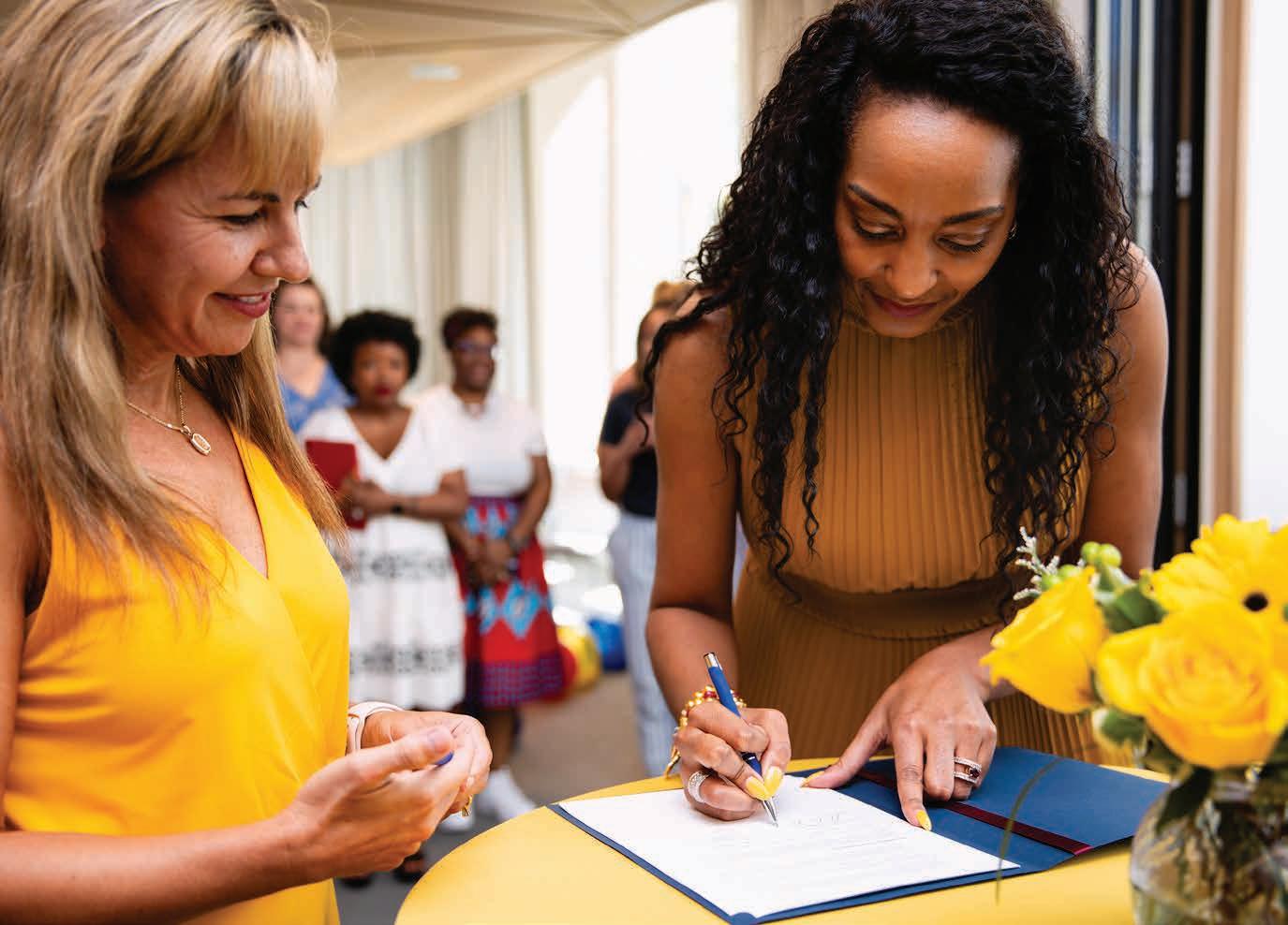
St. Edward’s President Montserrat Fuentes (left) and Huston-Tillotson President and CEO Melva K. Wallace sign a historic agreement between the two universities.
In fall 2023, Texas State Rep. Lulu Flores (Austin) filed a resolution acknowledging the university’s commitment to educating Latino students. HR 23 highlights that St. Edward’s recently earned the Seal of Excelencia and received significant donations from the Hector and Gloria López Foundation and the Hispanic Bar Association of Austin.
Maintained by a guild of staff, faculty and students, the St. Edward’s community garden and food forest provides a safe gathering space, a place for students to grow their own crops and an experiential learning area. Activities include participation in community festivals, cultural exchange and student research.
Made possible by a grant from the city of Austin and sponsorship from the Central Texas Food Bank, the Monarchs Food Pantry on campus offers 24-hour access to fresh produce, protein, dairy and shelfstable food as well as toiletries and school supplies for the St. Edward’s community.
St. Edward’s maintains an Environmental Justice team to support many initiatives, including energy and water conservation and waste reduction. Students and faculty have earned community recognition from local government organizations for their efforts, including the Air Central Awards.
St. Edward’s is one of 39 institutions — approximately 1% of U.S. colleges and universities — to earn the Seal of Excelencia from Excelencia in Education, a nonprofit organization dedicated to accelerating
Latino student success in higher education. St. Edward’s is the only Catholic university, the first private university in Texas and the second private university in the U.S. to receive this distinction.
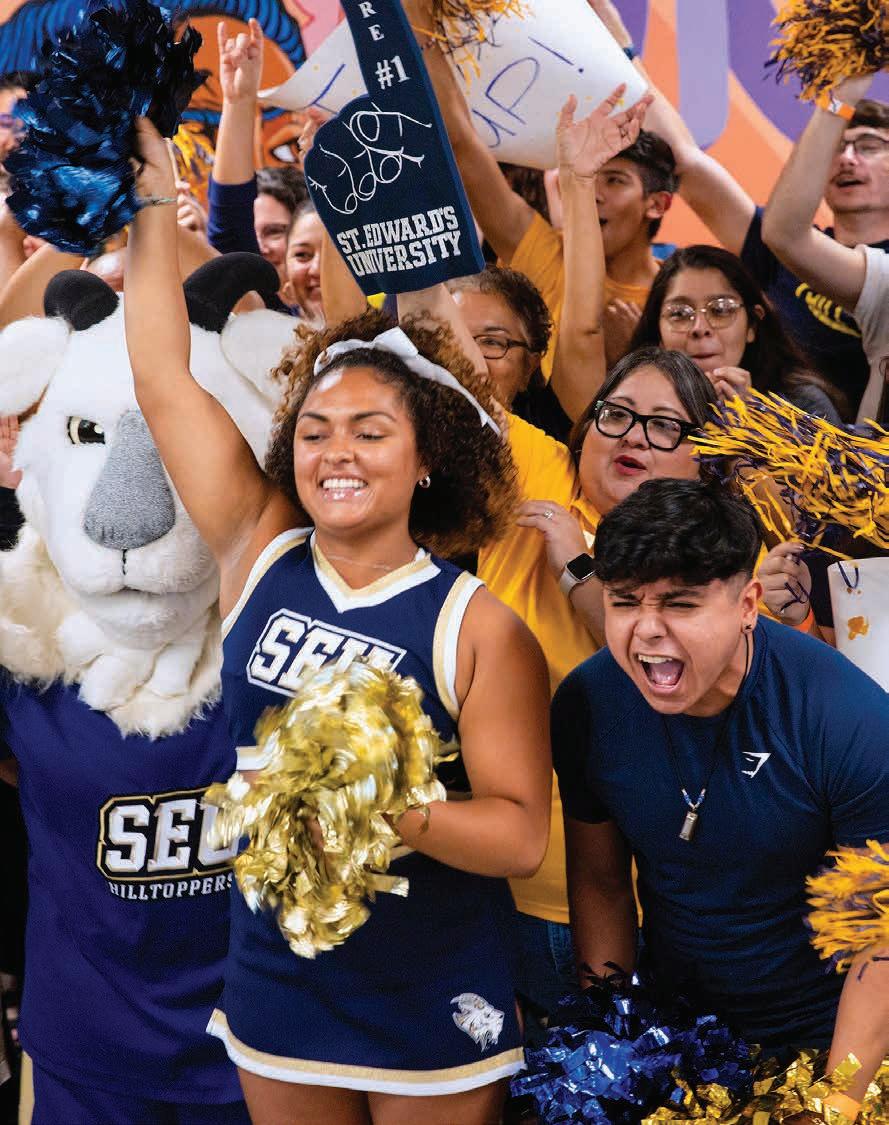
“Earning the Seal of Excelencia is a reaffirmation of the accountability St. Edward’s has to inspire our Hispanic and Latino students to pursue their academic goals and achieve them.”
PRESIDENT MONTSERRAT FUENTES

For the fifth year in a row, St. Edward’s was ranked among the top 10 universities in the Western region by U.S. News & World Report. The university moved up to No. 6 in the 2024 Best Colleges list. St. Edward’s also ranked among the regional top 10 in the U.S. News lists of Best Value Schools, Best Colleges for Veterans and Top Performers on Social Mobility.
For the 13th year, the U.S. Department of State’s Bureau of Educational and Cultural Affairs named St. Edward’s a top producer of Fulbright U.S. Students for the 2023-24 academic year. St. Edward’s ranks as one of the top three universities in the Master’s institutions list.
For the third year, St. Edward’s has been recognized as a leader among Hispanic-Serving Institutions for its strong relationship with the Fulbright program. Only 8% of the nearly 600 HSIs have received the designation.
The NCAA Division II recognized St. Edward’s with its Presidents’ Award for Academic Excellence, which honors schools that achieved an academic success rate of 90 percent or higher among student-athletes.
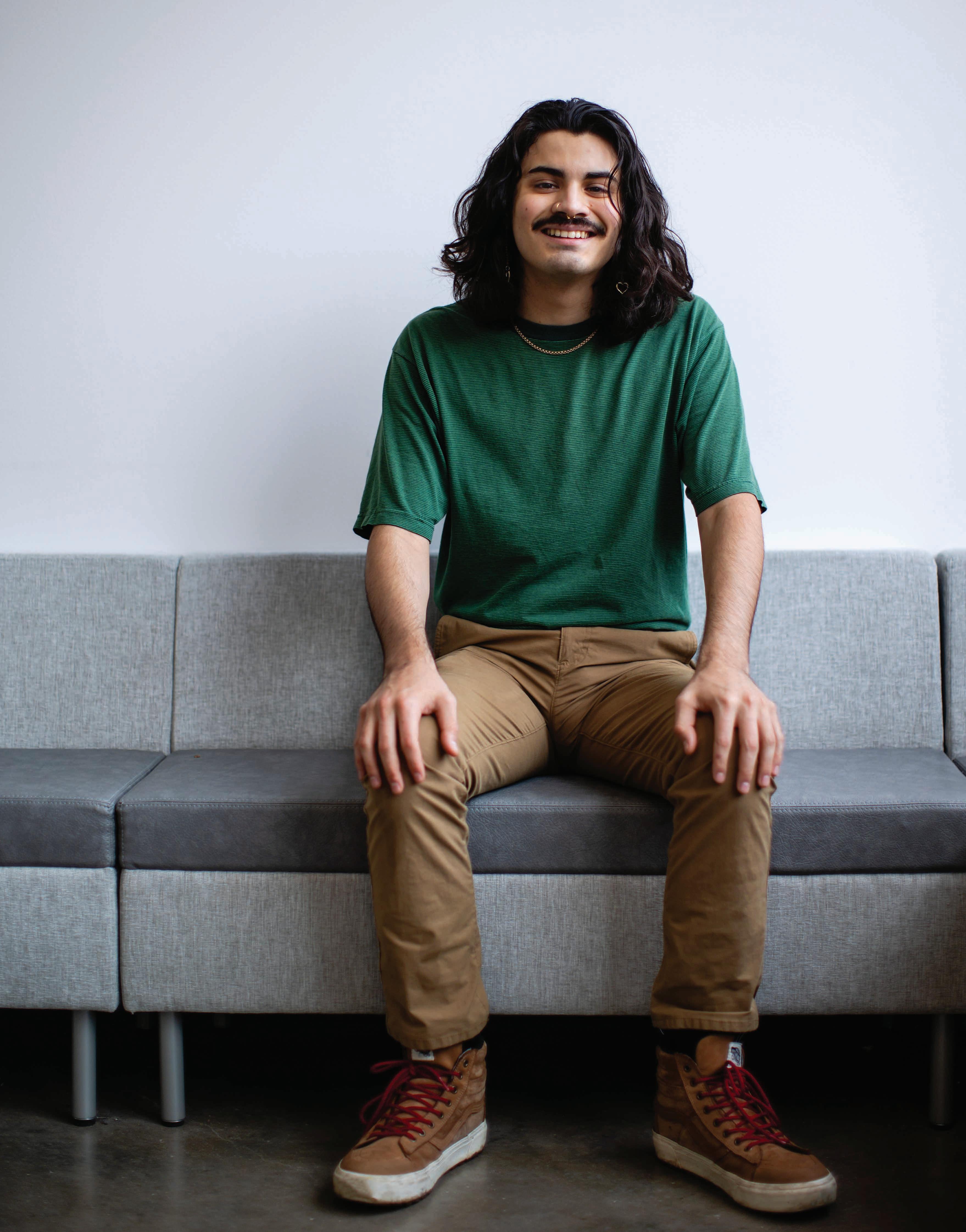
“Winning second place in the Battle of the Brains competition for Hispanic-Serving Institutions was very emotional. Our team of eight had exactly 24 hours to create a tool to decrease health inequality in the United States. We designed an app that could scan user grocery receipts to identify nutritional deficiencies in communities, and we mapped a route to deliver food to those places in one eighthour trip. Even though we started out as strangers with different outlooks and majors, our team had one thing in common — St. Edward’s. Knowing we were all committed to making the world more just and equitable kept us afloat when we were tired and stressed. You can’t put a price on those human connections.”
Joshua Mendiola ’25 Computer Science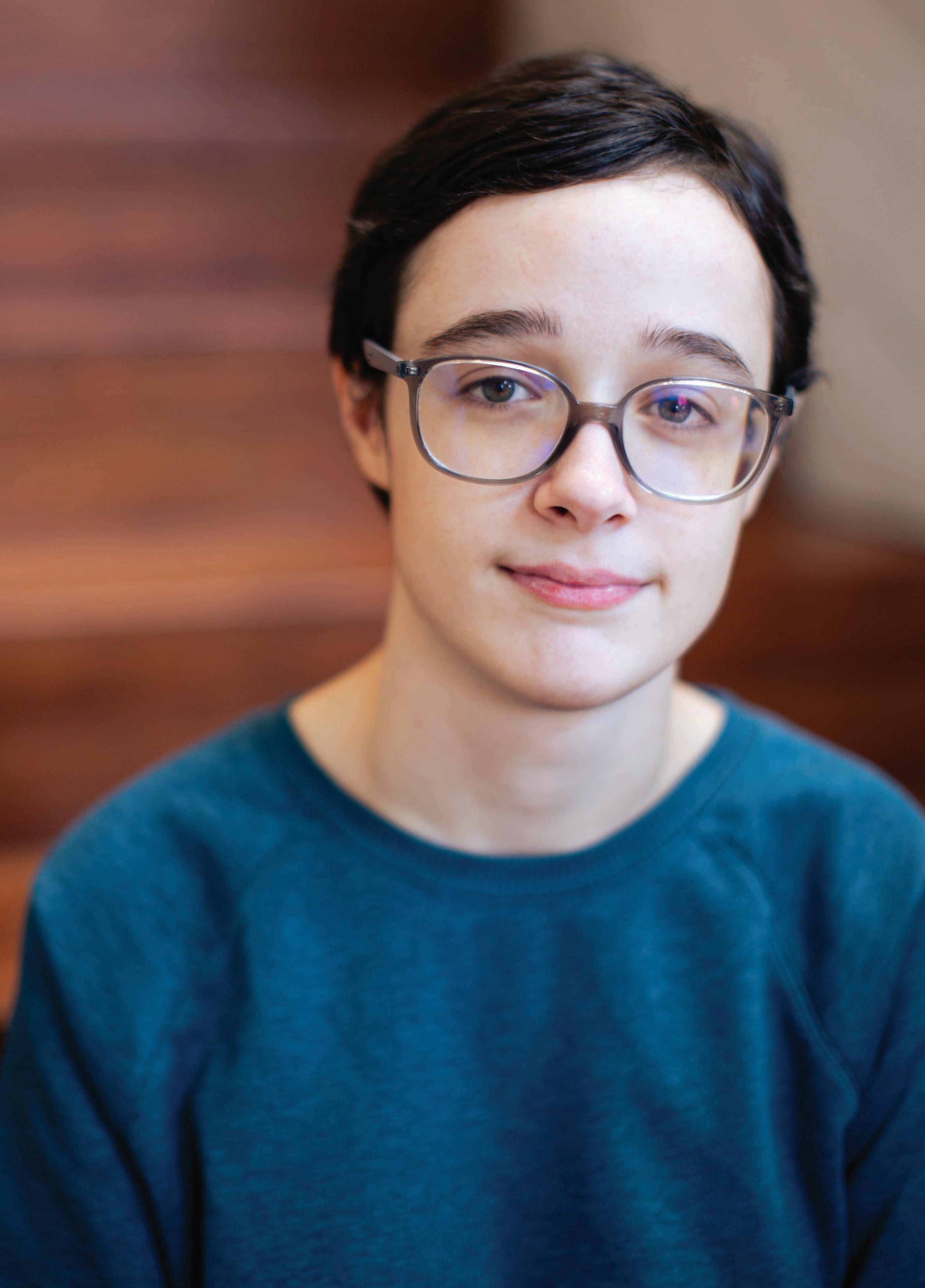
“I take a holistic approach to learning — I’m a User Experience Design major, yes, but I’m interested in philosophy, religion, environmental studies and more. When I took the Religious and Theological Studies experiential learning course with Professor Kelley Coblentz Bautch, she connected me with the Holy Cross Institute for the internship portion of the class. I helped behind the scenes during an annual convocation for Holy Cross educators, and I wrote for and copy edited the monthly InFormation newsletter. It was rewarding to see that I was making a tangible difference. I definitely recommend internships. You gain knowledge about the field and, more importantly, yourself.”
Sarah Jacks ’25 User Experience Design